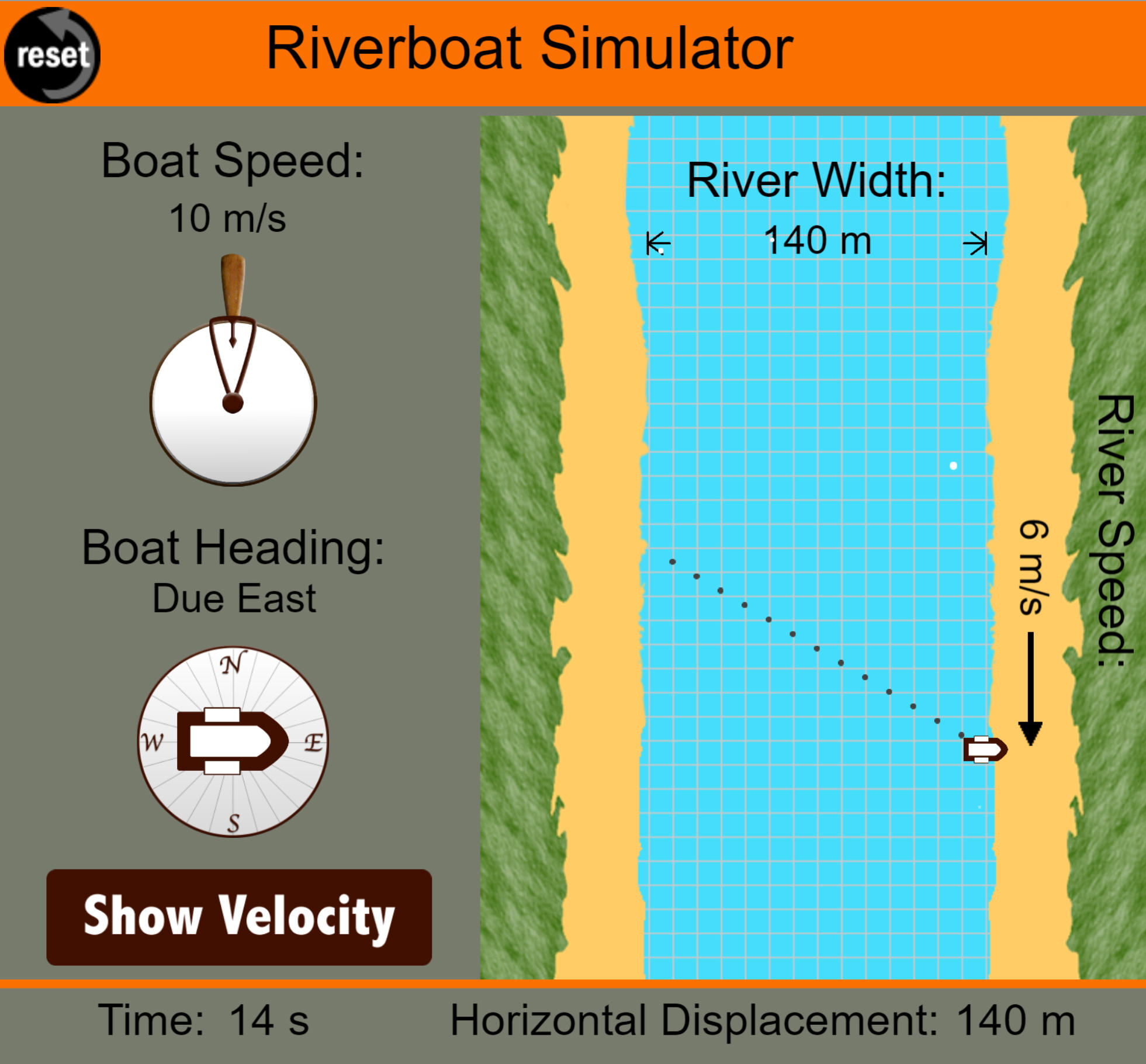 Class
84.5 Thursday,
6/9/22 -- last day of class
Class
84.5 Thursday,
6/9/22 -- last day of classWarm Up:
1. What's the point of this GIF?
2. What is modulation?
3. What is pulse-width modulation?
Today:
-
Please fill out the course evaluation form.
-
Exam time for a few people
-
Work on your "note card."
Homework:
- None. Prepare for the final.
 Class
84 Wednesday,
6/8/22
Class
84 Wednesday,
6/8/22Warm Up:
1. What do polarized glasses do? How are they useful? How do they work?
2. How does the "Amazing Secret Monitor" work?
Today:
-
How some things work -- borrowed from "How Things Work Now," By David Macaulay
-
Clean up, Disassemble Things...
-
Guitars (unless you want to keep yours -- though you can't keep the plug and amp)
-
Motors
-
Solenoid Buzzers
-
Trebuchets
-
Other stuff you may have stashed around the room
-
-
Exam time for a few people
-
Work on your "note card."
Homework:
- None. Prepare for the final.
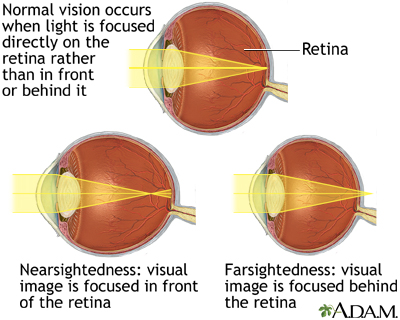 Class
83.5 Tuesday,
6/7/22
Class
83.5 Tuesday,
6/7/22Warm Up:
1. Why can't humans see clearly under water?
2. Guess which condition (on the right) makes it easier to see clearly under water? How does this relate to seals?
3. Goggles and masks can be used to see clearly under water, but they distort the observed heights of objects. Do they magnify or reduce? Why?

Today:
-
Check/review the homework that was assigned on Friday (due yesterday)
-
Color stuff
-
Seniors begin Final exam? It turns out that the deadline may actually be Thursday.
Homework:
- None. Prepare for the final.
 Class
83 Monday,
6/6/22
Class
83 Monday,
6/6/22Warm Up:
1. How can you find the North Star?
2. Why won't this work in 3,000 years?
3. How does this relate to Frisbees' embarrassing habit of twisting in the air, falling, and then rolling in a circle on the ground?
Today:
-
Check/review the homework
-
Physics of Frisbees
-
Bernoulli and lift
-
Principle of continuity
-
Bernoulli's Principle
-
-
Magnus Effect and curving
-
Angle of Attack and air bounce
-
Angular momentum
-
Conservation
-
Stability
-
Precession
-
Symptoms and cause
-
Remedy
-
-
-
-
APES peer reviewing?
-
Work time?
-
Ultimate?
Homework:
- None. Prepare for the final.
- Seniors can begin the final tomorrow (multiple choice section) and finish on Wednesday, or they can try to do the whole thing on Wednesday (70 minutes).
 Class
82.5 Friday,
6/3/22
Class
82.5 Friday,
6/3/22Warm Up: Get a lens.
1. Find the lens' focal length.
2. Hold the lens so that you can see focused real image.
3. Hold the lens so that you can see a focused virtual image.
Today:
-
Check/review the homework.
-
Final Exam Update:
-
A "note card" is allowed -- both sides of an 8.5" x 11" sheet.
-
Formulas will not be provided.
-
You can earn an extra 5% if you forego the note card -- but grades will be capped at 100%.
-
-
Burn stuff?
Homework:
Warm Up: None
Today:
-
Sound/Waves test retake
-
Work time
Homework:
- Due on Friday -- Lens Equation Problems PDF (answers)
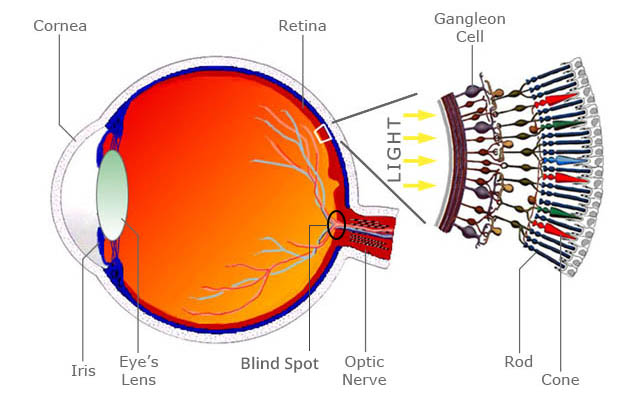 Class
81.5 Wednesday,
6/1/22
Class
81.5 Wednesday,
6/1/22Warm Up:
1. What would you guess is the approximate focal length of the human eye?
2. Does that focal length change? Explain.
3. Why do we have a blind spot?
4. How can you "find" your blind spot?
Today:
-
Who did the homework?
-
The Lens equation (and magnification) -- video from class
-
Try to see all of the images that we drew in class -- project the real images onto paper.
Homework:
- Due on Friday -- Lens Equation Problems PDF (answers)
- Sound/Waves Test Retake tomorrow
 Class
81 Tuesday,
5/31/22
Class
81 Tuesday,
5/31/22Warm Up:
1. How does depth perception work? How, for example, when we see something that is near and small, how do we know it's not far and large?
2. Sometimes small children look out of windows of moving cars and think the moon is following them. Have you ever had this experience?
3. How can we use parallax to determine the distance to a star?
Today:
-
Return stuff (retakes, project grading sheets...)
-
Hand out Final Exam Review Packet -- see details in Google Classroom
-
Check/review homework
-
Notes and Activity -- Lenses, Images, and Ray diagrams pdf video filled-in drawings
Coming Up:
-
Tomorrow (A) -- Lens Equation and Problems (due on Friday)
-
Thursday (B) -- Sound/Waves Test Retake, work time
-
Friday (A) : Return retakes, declare senior exemptions, check/review homework, The Eye
-
Monday, 6/6 (B) -- Check/review optics practice quiz, eye stuff
-
Tuesday, 6/7 (A) -- Seniors may begin their final exam. Work time.
-
Wednesday, 6/8 (B) -- Seniors must finish their final exam.
-
Thursday, 6/9 (A) -- Last day of physics. ???? Frisbees????
Homework:
- Optional Homework -- for a little extra (105% for completion) -- the Physics Classroom Concept Checker for optics. You can choose sudden death mode or marathon mode. First, you may want to check out the Interactive Lenses and Mirrors optics bench. In fact, you may want to use the interactive simulation while you complete the concept checker.
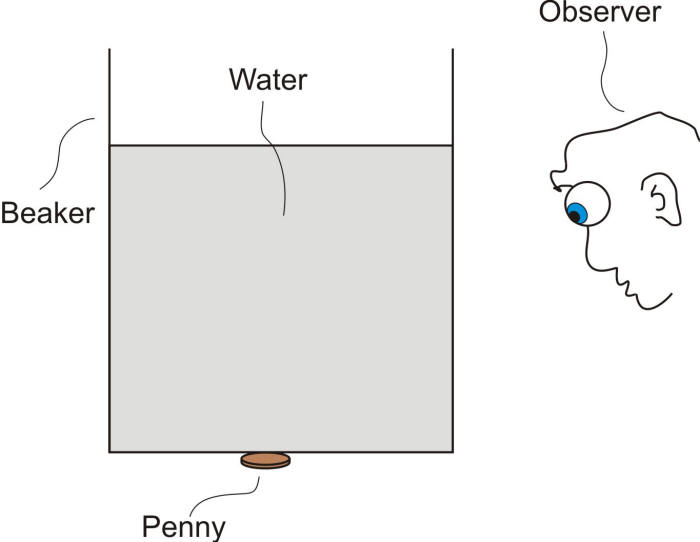 Class
80.5 Friday,
5/27/22
Class
80.5 Friday,
5/27/22Warm Up:
1. Why can't the observer see the penny? (and why can't you see the fish in the tank?)
2. How can we make the penny or the fish visible by adding just one component to the system?
Today:
-
Optional Retake -- Magnetism
-
Introduction to Lenses and Ray Diagrams
-
Homework:
- Complete the drawing portion of numbers 1-5 on
this handout. (PDF)
Follow the "step by step" directions for applying
3 rules of refraction, (described and explained here) to locate
and draw the image that is created when light travels from the
source object (arrow), through the convex lens, and converges to
make a real image. The objet is the arrow that's drawn on the
paper, and the image is another arrow that you will draw on the
paper.
- Solutions
- For background, read the anatomy of a lens, refraction by lenses, and (possibly) image formation.
Warm Up: Contemplate this -- the speed of light in a vacuum is always constant, relative to any observer. [Interesting web page explaining all of this]
Now consider the following situation. Fred is conducting a laser experiment on a very, very, very fast train. He attaches a mirror to the roof of the train car and shines a quick pulse of laser light directly upward at the mirror. Hank is standing still outside the train. The train car is made of glass, so Hank can see the whole thing.
The pulse of laser light goes up, reflects off of the mirror, and then goes back down to the floor. There's enough dust in the air to make the laser pulse visible.
1) If Fred and Hank were to draw the laser's "flight path" (as each of them sees it), what would each of them draw?
2) Who would see light travel a greater distance?
3) Assuming that Hank and Fred see light traveling the same speed, who sees it travel for the longest amount of time?

Today:
-
Last chance to take the waves/sound test. If you don't do it by today, you won't get a retake.
-
Finish Reflection and Refraction Practice (non-quantitative) -- with laser ray boxes! Review any confusing ones.
-
Notes and Practice: Chapter 25.3-25.4 (refraction , Snell's Law, and critical angle) Filled-In Notes Video from class
-
Return tests
Homework:
- Practice: Ch 25.3-25.4 Solutions
- Magnetism retake tomorrow
Warm Up: Refraction is the "bending" of waves as they pass from one medium to another. Rainbows are the result of reflection and refraction.
primary and secondary rainbows
4. The refraction of light waves can be understood in the same way that the mechanism of these object's curvature can be understood. What is that mechanism?


Today:
-
Reflection and Refraction Practice (non-quantitative) -- with laser ray boxes!
-
If you want the opportunity for a retake, take your sound and waves test by the end of class tomorrow. If not, you can have one shot (at version 2) next week. I will return the tests tomorrow, since so many students have still not finished their tests.
Homework: Don't forget about the magnetism retake on Friday. The sound/waves retake will be offered next Thursday.
Warm Up: None
Today:
-
Test
-
Here's a digital version of the test bonus. "Translational speed" means the speed at the center of rotation. You can turn it in by tomorow. It will be worth 5%.
Homework: None
Warm Up:
The diagram below shows top views of the same boy looking into mirrors. On the right, the mirror is a simple flat mirror. On the left, the mirror is two separate mirrors arranged at right angles. The boy has one blue eye and one green eye.
When he looks in the mirrors, where will his blue eye appear to be? Why?
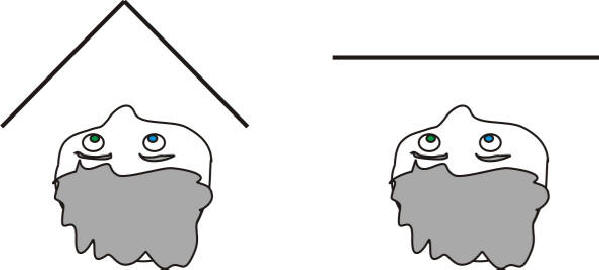
Today:
-
Check/review resonance lab
-
The quiz retake will be on Friday. I had considered breaking up the retake beyond the level of pages, but I have decided not to. You can take the first page, the 2nd page,/ both, or neither.
-
Return project grading sheets
-
The Electric Guitar Doppler Challenge results...
 (Extra Point Cutoffs: 2/4 = +2% on project; 3/4 = +3%)
(Extra Point Cutoffs: 2/4 = +2% on project; 3/4 = +3%) -
Test Review:
-
Questions about the optional practice test?
-
Go through the first practice test.
-
Homework: Prepare for tomorrow's test.
Warm Up:
1. What were the loudest sounds ever (according to listverse)?
2. How is sound volume measured?
3. Why is there a theoretical limit on how loud a sound can be?
| Source of sound (in air) |
Sound Pressure -- amplitude (psi) |
Volume in Decibels, calculated by 20*LogP/Po |
Po (threshold of hearing, in psi) | Loudest divided by Quietest |
| Shockwave (distorted sound waves > 1 atm; waveform valleys are clipped at zero pressure) | 14.69543147 | 194.0956869 | 2.9E-09 | 5,067,390,163 |
| Theoretical limit for undistorted sound at 1 atmosphere environmental pressure | 14.69543147 | 194.0956869 | ||
| Stun grenades | 2.900652647 | 180.0019545 | ||
| Simple open-ended thermoacoustic device[6] | 1.830166788 | 176.0018534 | ||
| .30-06 rifle being fired 1 m to shooter's side | 1.053662074 | 171.206067 | ||
| M1 Garand rifle being fired at 1 m | 0.728498912 | 168.0006182 | ||
| Rocket launch equipment acoustic tests | 0.580130529 | 166.0225545 | ||
| Jet engine at 30 m | 0.091660624 | 149.9956962 | ||
| Threshold of pain | 0.009166062 | 129.9956962 | ||
| Vuvuzela horn at 1 m | 0.002900653 | 120.0019545 | ||
| Hearing damage (possible) | 0.002900653 | 120.0019545 | ||
| Jet engine at 100 m | 0.029006526 | 140.0019545 | ||
| Non-electric chainsaw at 1 m | 0.000913706 | 109.9681656 | ||
| Jack hammer at 1 m | 0.000290065 | 100.0019545 | ||
| Traffic on a busy roadway at 10 m | 9.15156E-05 | 89.98194182 | ||
| Hearing damage (over long-term exposure, need not be continuous) | 5.16316E-05 | 85.01035459 | ||
| Passenger car at 10 m | 2.90065E-05 | 80.00195455 | ||
| EPA-identified maximum to protect against hearing loss and other disruptive effects from noise, such as sleep disturbance, stress, learning detriment, etc. | #NUM! | |||
| Handheld electric mixer | 5.51124E-06 | 65.57702656 | Classroom Unit Ventilator | |
| TV (set at home level) at 1 m | 2.90065E-06 | 60.00195455 | ||
| Normal conversation at 1 m | 2.90065E-06 | 60.00195455 | ||
| Very calm room | 9.19507E-08 | 30.02313979 | ||
| Light leaf rustling, calm breathing | 9.16606E-09 | 9.995696197 | ||
| Auditory threshold at 1 kHz | 2.90065E-09 | 0.001954545 |
Today:
-
Take quizzes. Return Quizzes on Monday -- too many are still out. Here's the distribution

-
Check/review homework (resonance lab)
-
The Electric Guitar Doppler Challenge! -- Determine the speeds of three noisy vehicles using your ears, your electric guitar, and a calculator. (link to sounds folder)
-
Work on other practice test? Sing songs outside? Some nice songs people know
Homework: Optional -- Another sound and Waves Practice Test. (PDF) Solutions Solution to Problem #9
Warm Up: None
Today:
-
Quiz
-
Turn-in your guitar project. There's now an assignment in Google Classroom, so you can do this.
-
2nd Semester Grading -- after quizzes and guitar projects go in.
Homework:
-
-
Bonus Opportunities -- For one point on Tuesday's test, come up with an equation that tells us the speed of a noisy object based on its Doppler shift, as defined by its approaching and receding frequencies. In other words, write a formula for Vobject in terms of fapproaching and freceding. For another point, derive an equation that will do the same thing, based on half-steps. In other words, write a formula for Vobject in terms of the number of half-steps of its Doppler shift.
-
Answers the resonance lab questions (page 6 -- I think -- of this handout... Sound/Waves Notes, Part 2 (odds and ends) (PDF))
-
 Class
77 Wednesday,
5/18/22
Class
77 Wednesday,
5/18/22Warm Up: In today's lab, you're going to submerge an open pvc pipe in water. Then, pulling the pipe vertically out of the water, you will search for positions at which the pipe resonates with a 512Hz tuning fork (plus another one).
1. Explain what is going on when the pipe resonates.
2. Draw the standing waves for the the shortest pipe length that will cause resonance.
3. Draw the standing waves for the next shortest pipe length.
4. What is the ratio of this short pipe length to the long pipe length?
5. Which pipe length is producing its fundamental harmonic?
6. How does this situation contradict what I have told you about harmonics?
Today:
-
Check for, and review, homeworks
-
Practice test through problem #4 (Answers/Solutions)
-
The rest of the Practice Test (Answers/Solutions)
-
Doppler Effect 17.4 solutions
-
-
Resonance lab
Homework:
-
Magnetism quiz tomorrow. Be ready! Here's some stuff to help you prepare...
-
Magnetism Quiz Study Guide
-
Video explaining things on the Magnetism Practice Quiz The last few short answer explanations aren't great. For those, you may be better off looking at the asnwer key, which I fixed up with nice, concise answers before I scanned it.
-
 Class
76.5 Friday,
5/13/22
Class
76.5 Friday,
5/13/22Warm Up:
If you're standing next to a race track, what do you hear as the cars pass you?
a. The cars' pitches change from high to low.
b. The cars' pitches change from low to high.
c. There is no change in pitch.
Today: Your assignment is to complete the "17.4 Practice" (listed in homework section, below). In the video I complete number 1 of the assignment, as an example.
- As a class, watch the first 16:50 of this video (from 2019) explaining the Doppler Effect formula (and how to complete the practice problems). Stop at 16:50! You may need to turn up the volume.
- You can print the problems from a desktop computer, or just do the work on your own paper.
- If you want to work on guitar stuff today or in advisory, the cords and amps are in a box lid above the cabinets, on the southmost wall.
Homework: Due on Wednesday
-
Finish the 2019-20 Test (#7, #17, and problems 5-8) Answers/Solutions
Extra Links, in case you're interested :
 Class
76 Thursday,
5/12/22
Class
76 Thursday,
5/12/22Warm Up: What do you think this simulation is supposed to demonstrate? How does it relate to riding in a car with one window open?
Today:
-
Slinky demo
-
Get this handout: Sound/Waves Notes, Part 2 (odds and ends) (PDF) Filled-in Version
-
Notes
-
Work time (at least 30 minutes -- stop times: 12:10 (B56), 2:05 (B7/8)
Homework:
-
2019-20 Test through problem #4, but skip #7 and #17. I forgot to include the formula d=rt. You'll need that one. [The test is at the end of the handout above] Answers/Solutions
 Class
75.5 Wednesday,
5/11/22
Class
75.5 Wednesday,
5/11/22Warm Up: How does a speaker work?
Today:
-
Magnetism Quiz:
-
Magnetism Quiz Study Guide
-
-
Project Info:
-
Guitar Project Requirements [example project]
-
Link to old song list from our 2014 Physics 100 name that tune contest (with some new replacements)
-
Homework:
-
Magnetism Quiz next Thursday
 Class
75 Tuesday,
5/10/22
Class
75 Tuesday,
5/10/22Warm Up: What would we hear if we listened to these two sounds, simultaneously?
Today:
-
Run, hide, fight "drill" -- slide deck, poster, and handout
-
Demonstrate use of the voltage probe
-
Safety reminder
-
Dismantle the soldering stations
-
Project Info:
-
Guitar Project Requirements [example project]
-
Link to old song list from our 2014 Physics 100 name that tune contest (with some new replacements)
-
The rest of the week, and then some (tentative plan):
-
Tuesday (B) -- Project work time.
-
Wednesday (A) -- Magnetism Quiz Clarity
-
Thursday (B): Some more sound/waves notes. Final bit of in-class project work time (30 minutes, at least)
-
Friday (A) -- Wrap up sound/waves concepts
-
Next Monday -- No class, due to testing
-
Next Tuesday -- no class, due to testing
-
Next Wednesday (B day) --
-
Resonance Lab
-
Guitar projects are due
-
-
Next Thursday (A day) -- magnetism quiz; waves practice test for homework?
-
Next Friday (B day) -- Finish waves. Waves and Sound test on Tuesday, 5/24. Begin optics?
-
Monday, 5/23 (A day) -- Begin Optics
 Class
74.5 Monday,
5/9/22
Class
74.5 Monday,
5/9/22Warm Up:
1. How does a bow cause a string to vibrate at its resonant frequency?
2. In light of this, how do you increase volume on a bowed instrument? Why does this work?
Today:
-
Project Info:
-
Guitar Project Requirements [Physics 100 example -- yours has additional and different requirements]
-
Link to old song list from our 2014 Physics 100 name that tune contest (with some new replacements)
-
-
Work time
Warm Up: How can you find out whether a song is in a major key or a minor key?
Today:
-
Project Info:
-
Guitar Project Requirements [Physics 100 example -- yours has additional and different requirements]
-
Link to old song list from our 2014 Physics 100 name that tune contest (with some new replacements)
-
-
Work time
Warm Up: Can you break glass with your voice?
Today:
 Class
73 Wednesday,
5/4/22
Class
73 Wednesday,
5/4/22Warm Up:
1. Identify any nodes and/or antinodes in this video of the "wave pool."
2. Which harmonic is this? Could there be other harmonics?
3. Two important wave-related terms are resonance and forced vibrations. What do the two terms mean, and how are they related? Which one applies to the body of an instrument? Which one applies to breaking glass with your voice? How about the Tacoma Narrows Bridge collapse?
-
Watch this one before the other one: Tacoma Narrows Bridge collapse -- Old footage
-
Watch the other one before this one: Tacoma Narrows Bridge collapse -- Discussion
Today:
-
Make a pickup. Here are the pickup Instructions. there will likely be bottlenecks at the winding stations and the soldering stations. Try to watch someone else do it before you try, and learn from their experience. If every group does this, the last group should be very efficient and successful.
-
Build your guitar and mark the fret locations. Here are the guitar directions. Don't write anything in Sharpie at this point!
Homework: None
 Class
72.5 Tuesday,
5/3/22
Class
72.5 Tuesday,
5/3/22Warm Up: This video shows standing waves. They're like the string waves you saw in here, but they're on a planar sheet of metal, rather than a linear string. Does the white substance (salt? powder?) settle at nodes or at antinodes?
Today:
-
Make a pickup. Here are the pickup Instructions. there will likely be bottlenecks at the winding stations and the soldering stations. Try to watch someone else do it before you try, and learn from their experience. If every group does this, the last group should be very efficient and successful.
-
Build your guitar. Here are the guitar directions. Don't write anything in Sharpie at this point!
Homework: None
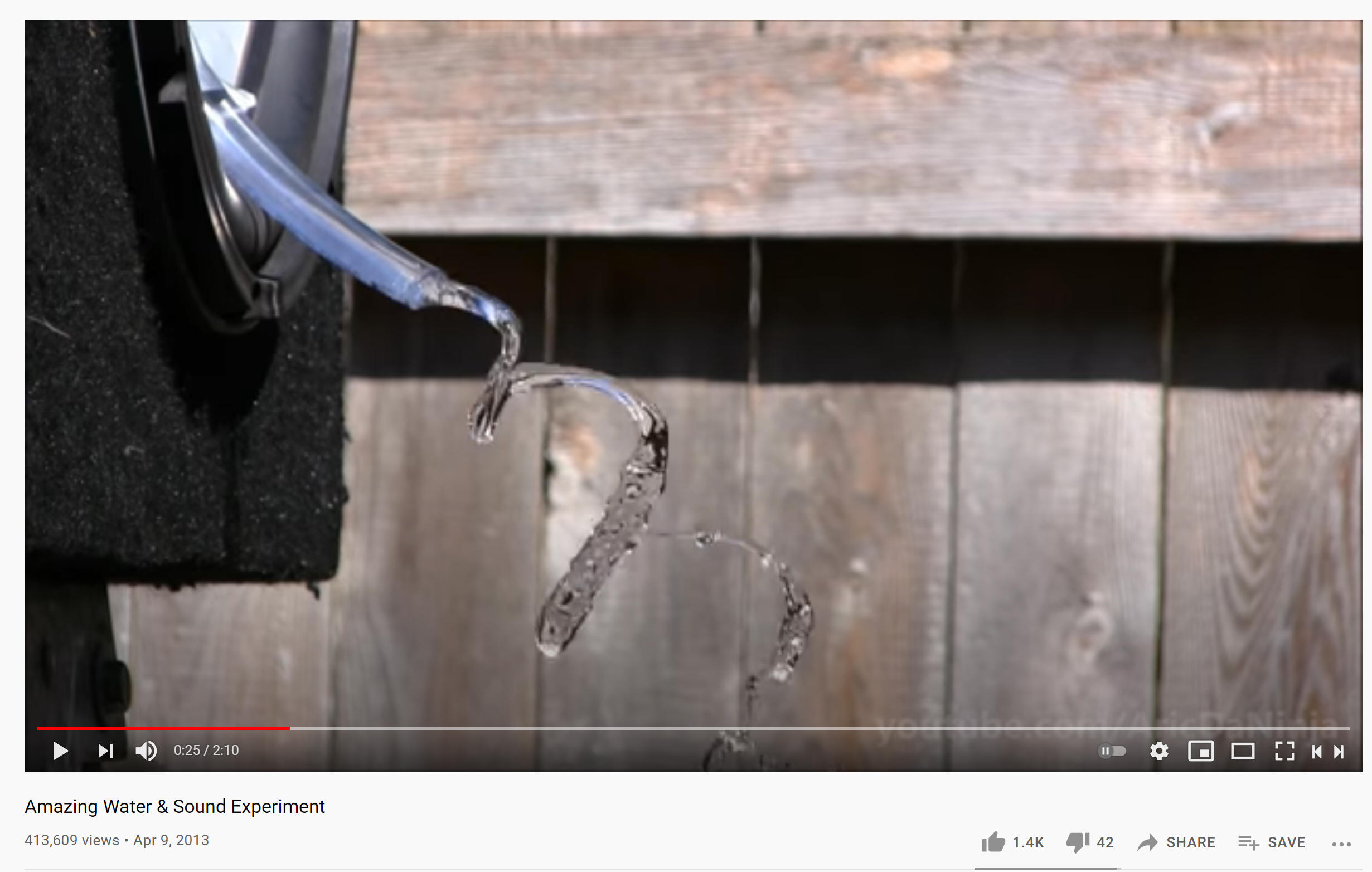 Class
72 Monday,
5/2/22
Class
72 Monday,
5/2/22Warm Up: What's happening in the "Amazing Water and Sound Experiment?"
Today:
-
Return magnetism project grading sheets. You can make corrections by explaining whatever you lost points for, on paper.
Electric Guitar Project:
-
Get your group on the pickup-winding list. Then get your bobbin ready so that you can begin winding when your turn comes. After that, build your guitar (directions below).
-
Make a pickup -- there will likely be bottlenecks at the winding stations and the soldering stations. Watch the group that goes before you, and learn from their experience. If every group does this, the last group should be very efficient and successful. [Pickup Instructions]
-
Build your guitar. Here are the directions. Don't write anything in Sharpie at this point!
Homework: None

 Class
71.5
Friday,
4/29/22
Class
71.5
Friday,
4/29/22Warm Up:
1. What's the best way to remove wire (or thread, fishing line, etc) from a spool, quickly? Does this method have any drawbacks?
2. Do you know how soldering works?
Today:
1. Check/review homework
2. Begin Electric Guitar Project:
-
Make a pickup -- there will likely be bottlenecks at the winding stations and the soldering stations. Watch the group that goes before you, and learn from their experience. If every group does this, the last group should be very efficient and successful. [Pickup Instructions]
-
Pick out (find) a guitar string. Try to not get poked!
-
I need to get some more neck materials and hardware, so we won't start on the "body" until tomorrow, but the pickup is the hardest part.
-
Here's an old one-string electrict guitar that I made in 37 minutes, from start to finish. It's similar to the one you will make, but I used a tiny neodymium magnet inside the coil. Your pickup will be simpler.
Homework:
[This assignment is Google Classroom.] Modify this fret calculation template to create a spreadsheet that will calculate fret positions for any length string. You will use this spreadsheet for calculating your instrument's fret positions. Answers for a 33cm bridge-to-nut distance @440Hz. Video showing how to do this. You will need to use this spreadsheet on Monday, during class.
 Class
71
Thursday,
4/28/22
Class
71
Thursday,
4/28/22Warm Up: Why does this string look like this?
Today:
-
1.
Notes: Wave and Music theory relating to fret calculations -- and
fret practice
(pdf version)-- shorten to focus only on fundamental
Filled-in notes
- Wave interference and standing waves
- Standing wave simulation
- Make interfering and standing waves, using a shlinky
- Standing wave video
- Division of the octave
- Calculating vibrating string length (distance from nut to frets).
- Mechanical Waves Links
-
2. Begin Electric Guitar Project:
-
Make a pickup -- there will likely be bottlenecks at the winding stations and the soldering stations. Watch the group that goes before you, and learn from their experience. If every group does this, the last group should be very efficient and successful.
-
Pick out (find) a guitar string. Try to not get poked!
-
I need to get some more neck materials and hardware, so we won't start on the "body" until tomorrow, but the pickup is the hardest part.
-
Here's an old one-string electrict guitar that I made in 37 minutes, from start to finish. It's similar to the one you will make, but I used a tiny neodymium magnet inside the coil. Your pickup will be simpler.
-
Homework:
#20, on the last page of Notes: Wave and Music theory relating to fret calculations -- and fret practice (pdf version). Solutions
 Class
70.5
Wednesday,
4/27/22
Class
70.5
Wednesday,
4/27/22Warm Up:
1. What can we do with these generators?
2. What do you think is inside them?
Short Video: Motor vs Generator
Today:
-
The motor activity is due today. Submit it in Google Classroom. If you finish with that, make a speaker (Activity #3).
-
Pick out (find) a guitar string. Try to not get poked!
-
If there's time?
-
Preview the electric guitar project (This is the Physics 100 version, so yours will be a bit different)
-
Instead of a test over electromagnetism, there will be a project (1 string electric guitars) and a quiz. The quiz will be straightforward, with a tricky bonus section. Both assignments will be due some time after next week.
-
See what Chickenbone John can do with a 1 string electric guitar.
-
Homework: None
 Class
70
Tuesday,
4/26/22
Class
70
Tuesday,
4/26/22Warm Up: What is this thing? How does it work?
Today:
-
Check/review the homework
-
Complete Activity #2 in Google Classroom. If you finish with that, make a speaker (Activity #3). Try to finish it today. It's due tomorrow at 2:35PM.
Homework: Complete the "Magnetism Check-In" in Google Classroom. It won't be graded on correctness -- just completion.

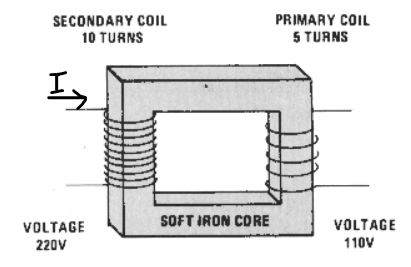 Class
69.5
Monday,
4/25/22
Class
69.5
Monday,
4/25/22Warm Up:
The picture on the far right shows a transformer. The picture on the near right shows a simplified transformer. The two coils of insulated wire are not connected to one another. There is a wire connecting one of these to your home.
1. What does a transformer do?
2. Transformers work with alternating current (A.C.). If the left coil's current (shown in the diagram) is increasing at this moment, what is the direction of the current in the coil on the right?
3. The purpose of these transformers is to "step down" the high voltage in the transmission lines to a lower voltage that enters your home. Why do the transmission lines need to have such high voltage?
Today:
-
Return retakes
-
Check/review the homework
-
Complete Activity #2 in Google Classroom. If you finish with that, make a speaker (Activity #3).
Homework:
-
Complete #29-39 on p. 12-13 of the packet. Be aware of a few issues...
-
Fix #30 by changing "leftward" to "rightward."
-
Fix #34 -- assume current to be increasing in magnitude.
-
For #37, you'll need this PDFto see the diagram. Video explanations Answers
-
 Class
69
Friday,
4/15/22
Class
69
Friday,
4/15/22Warm Up: We have three identical corded drills and one driver bit. With no additional materials, and without disassembling a drill, how can we provide electrical power to two of the drills by plugging just one of them into the wall?
Today:
-
Test Retake
-
If you're not taking the test, quietly build a motor (activity #2 in Google Classroom).
Homework:
-
Due after break: Complete #1-28 on p. 9-11 of the packet. Skip #10 and #19! They're bad! Scanned Answers Video of solutions
 Class
68.5
Thursday,
4/14/22
Class
68.5
Thursday,
4/14/22Warm Up:
1. How does an induction stove work? What happens if you put a big (1kg) aluminum plate on top of a powerful induction stove? Why?
2. Why don't people use aluminum pots on induction stoves?
3. What is levitation melting?
Today:
-
Check/review homework
-
Buzzer videos are due today. If yours doesn't work, pretend that it does. You could even make a "BZZZZZZ" sound in the video. Then explain how it should work. Don't forget to address everything in the Google Classroom assignment (like explaining the direction of the solenoid magnetic field). Read the assignment carefully!
-
Build a motor (activity #2 in Google Classroom).
Homework:
-
Optional -- prepare for the test retake. It's tomorrow.
-
Due after break: Complete #1-28 on p. 9-11 of the packet. Skip #10 and #19! They're bad! Scanned Answers Video of solutions
 Class
68
Wednesday,
4/13/22
Class
68
Wednesday,
4/13/22Warm Up:
The "Ring Launcher" launches conducting rings. It also lights lightbulbs without contact. How does it work?
Today:
-
Check/review homework
-
Finish the solenoid buzzers! Read the video requirements in Google Classroom. Make your video and submit it.
-
Start making a motor (activity #2 in Google Classroom).
-
I fixed some of the issues with the Unit 10 Handout PDF
Homework:
-
#11-12 on page 4 of the packet.
Warm Up:
Guess what happens if I drop a strong magnet into a vertical copper pipe?
Today:
-
Return Tests
-
Lenz' Law. Do some problems together.
Homework:
-
Complete problems 8-10 on page 4 of the packet
Warm Up:
Nonw
Today:
-
Test
-
Here's a copy of the Test bonus. You can answer it on your own paper and turn it in by the beginning of class tomorrow.
Homework:
-
Complete #15-19 on page 6 of the packet Solutions Video explanations
 Class
66.5
Friday,
4/8/22
Class
66.5
Friday,
4/8/22Warm Up:
1. Will the top of the motor coil rotate toward us or away from us?
2. When I make a motor like this, I sand both ends of the coil wire, but I only sand half of each end (as shown in the close-up). Why do I do this?
Today:
-
Check/review the homework
-
Questions about the test?
-
Work time
Homework:
-
Test on Monday. For details, see the packet (particularly the practice test) and the link provided in class #56.
-
Due on Tuesday Complete #15-19 on page 6 of the packet Solutions Video explanations
 Class
66
Thursday,
4/7/22
Class
66
Thursday,
4/7/22Warm Up:
This is one way to build a buzzer. Can you explain how it works?
Today:
-
Check/review the homework Here's a video of me going over the answers
-
Return and review the circuit lab sheets
-
Build a solenoid buzzer, make a brief video explaining how it works, disassemble it, and return its parts for reuse (see the assignment in Google Classroom). You only need to submit one video per group.
Homework: Complete #1-14 on pages 5 of the packet Solutions Video explanations
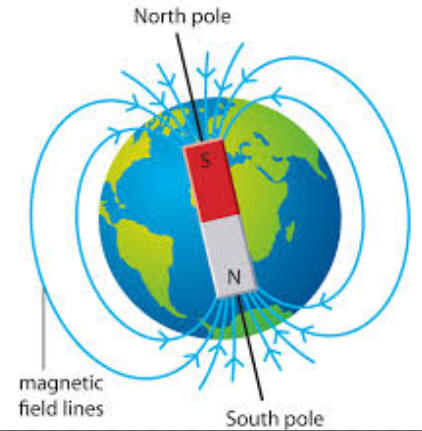 Class
65.5
Wednesday,
4/6/22
Class
65.5
Wednesday,
4/6/22Warm Up:
1. What's wrong with this diagram?
2. Why is the north pole of a magnet called the "north" pole?
Today:
-
Did anyone come up with questions last night?
-
We will go over the circuit lab tomorrow -- because I want to start the new unit today, to spread out the learning a bit.
Start the new unit -- Magnetism (and electricity) Unit 10 Handout PDF
Homework: Complete 1-5 on packet p. 3. Video help Answers: 1. CCW through coil 2. Force is attractive 3. Rightward 4. Top of coil is pushed away from us (into the paper) 5. Positive terminal is on the left
 Class
65
Tuesday,
4/5/22
Class
65
Tuesday,
4/5/22Warm Up: A digital multimeter, like the one on the right, can be used to measure voltage (voltmeter mode) and current (ammeter mode). In this class, we only use the voltage measuring function, because measuring current can be tricky and troublesome.
When we use a multimeter, we "insert" it into the circuit, so that charge flows through the multimeter.
1a. To measure voltage (potential drop) across a resistor, should we "insert" the multimeter in parallel or in series with the resistor?
1b. In voltmeter mode, is it best for the multimeter itself to have a high resistance or a low resistance? Why?
2a. To measure the current flowing through a resistor, should we insert the multimeter in parallel or in series with the resistor?
2b. In ammeter mode, is it best for the multimeter to have a high resistance or a low resistance? Why?
3. In this class, we don't measure current with our multimeters because it results in a lot of blown fuses. Can you guess how this happens?
4. What is the purpose of a
fuse?

Today:
-
Check/review homework.
Finish the Circuit Lab.
-
Review directions for using power supplies AND NOT BLOWING OUT BULBS!!!!!!
-
Review use of multimeters
-
Build circuits and complete lab. Confirm your answers using the PhET D.C. circuit construction kit.(intro)
-
Turn in one lab handout for your group.
Homework: Here's what's on the test. Take a look. If you have questions about anything, ask them tomorrow or on Friday. The test will be on Monday. There is no other homework.
 Class
64.5
Monday,
4/4/22
Class
64.5
Monday,
4/4/22Warm Up: Can you anticipate what comes next in Mr. Chase's energy distribution analogy for circuits?
Today:
-
Check/review homework.
-
Mr. Pennington's "4 minute drill" -- answers are on page 2
-
We will finish the circuit lab tomorrow.
Homework: No homework
 Class
64
Friday,
4/1/22
Class
64
Friday,
4/1/22Warm Up: Mr. Chase collected data for the graph on the right using a light bulb like the ones you will be using in class.
1. What does the slope of the graph represent?
2. What does this graph tell you about light bulbs in circuits?
3. How many "unique currents" are there in the circuit shown in yesterday's warm-up?
Today:
-
Check/review homework. Do another Kirchoff problem
-
-
Review directions for using power supplies AND NOT BLOWING OUT BULBS!!!!!!
-
Review use of multimeters
-
Build circuits and complete lab. Confirm your answers using the PhET D.C. circuit construction kit.(intro)
-
Homework: Two number twos...
- Complete #2 (the bottom one) from p.19 of the packet. Solutions
- Complete #2 from this link... More Kirchoff's Laws Practice (#2) Solutions Video Solutions
 Class
63.5
Thursday,
3/31/22
Class
63.5
Thursday,
3/31/22Warm Up: In a circuit, a "junction" is a point at which three or more conducting paths coincide. A "loop" is a conducting path that departs from some starting point and returns to that starting point without traversing any other point twice. Video of this in PhET DC Circuit Lab
1. How many junctions are in the circuit?
2. How many unique loops are there in the circuit on the right?
3. True or false: The amount of current flowing into any junction must always equal the amount of current flowing out of the junction.
4. True or false: If a charged particle takes one full trip around any loop, the overall voltage experienced (change in potential) will always be exactly zero.
Today:
-
Return retakes
-
Check/review homework
-
Kirchoff's Rules (p.17-18)
Homework:
- A7/8 Only -- Complete the Kirchoff's Rules problem that we started in class. Solutions
Warm Up: None
Today:
-
Test retake
Homework:
- Mr. Pennington's Test -- Packet p. 20-24 Solutions Multiple Choice Video Problems Video
 Class
62.5
Tuesday,
3/29/22
Class
62.5
Tuesday,
3/29/22Warm Up: Watts is the unit for power. This includes electrical power.
1. Here's an analogy... Dachsund : Dog :: Maine Coon : Cat. Complete this string of analogies...
Newton : kgm/s2 :: Volt : _____ :: Ampere : ______ ::Watt : ________
2. Using dimensional analysis, can you suggest a formula for electrical power?
3. How does an incandescent bulb work? How can a bulb's brightness be increased or decreased?
Today:
-
Check/review homework
-
Reminder: Electrostatics Test retake tomorrow
Notes: p.9-10 and some on 11 &12 -- Resistance, Resistivity, and Power Filled-in notes Video from last year -- search through for these notes
Homework: Due on Thursday -- If you're not retaking the Electrostatics Test, you can work on this in class tomorrow.
- Resistivity and Power (p. 9-10). One resistivity problem. Here's the problem. Here's the solution.
- Mr. Pennington's Test -- Packet p. 20-24 Solutions Multiple Choice Video Problems Video
- Not important (optional) -- finish the parts of the equivalent resistance challenge (p.15,16) that we skipped. This involves merely calculating power in a few instances.
 Class
62
Monday,
3/28/22
Class
62
Monday,
3/28/22Warm Up: The figure on the right clarifies a formula that can be used for calculating the resistance (R) of a wire. Can you figure out what it means and how it makes sense?
Today:
-
Electrostatics retake on Wednesday
Notes: Video from last year -- covers more than what we're doing today Filled-in notes
-
20.3 (p.9 -- Resistance and Resistivity)
-
21.1 (p. 10-12, except not power) Unit 9 Packet (PDF)
Practice Together: Equivalent Resistance challenge, problem 2 (p. 16). Remember this!

Tomorrow: Resistivity and Power (p. 9-10). One resistivity problem. Here's the problem. Here's the solution.
Wednesday: Pennington Practice Test
Homework:
-
"Circuit Reduction -- The Nine Companions" (packet p. 13-14) Solutions Video help
-
Equivalent Resistance Challenge, Problem #1 -- but not P-- Solutions to equivalent resistance challenge
 Class
61.5 Friday,
3/25/22
Class
61.5 Friday,
3/25/22Warm Up:
1. According to the labeling, how many joules of energy are stored in this battery when it is fully charged?
2. If a fully charged battery like this one were powering a 100% efficient lifting device, how much mass could it lift a distance of 1 meter?
Today:
-
Electrostatics retake next Wednesday
-
Check/discuss homework
-
Notes: 21.1 (p. 10-12, except not power) Unit 9 Packet (PDF)
-
Monday's homework will be this and more... On p. 13-14, complete "Circuit Reduction -- The Nine Companions" Solutions Video help
Homework:
-
None
 Class
61 Thursday,
3/24/22
Class
61 Thursday,
3/24/22Warm Up:
Check out the active graphic DC Circuit Water Analogy at Hyperphysics.com. According to the analogy...
1. Voltage is like _____
2. Current is like _____
3. Resistance is like _____
Today:
-
Retake next Wednesday
-
New Unit -- Electric Current and Circuits. Move quickly through the beginnning to get to the more interesting problems. (briefly discuss why?)
-
Zoom through voltage (potential), current, and resistance notes.
- Get
Unit 9 Packet
(PDF) and number the pages. The numbers got cut off
:-(
- Notes: Chapter 19.1 (Packet p. 1-2) 19.1 and 20.1 Solutions and Filled-in Notes
- Video of 19.1 notes
-
20.1 -- Current Filled-in Notes Video
-
20.2 -- Resistance filled-in notes Video
- Get
Unit 9 Packet
(PDF) and number the pages. The numbers got cut off
:-(
Homework: 8 questions spread over 3 separate pages
-
Packet p. 3: 1A, 3C (Use the provided answer to 3A) Solutions Video of 19.1 practice solutions
-
Packet p. 6: 1, 5, 7 Solutions Video help
-
Packet p. 8: 2, 3, 7 Solutions video help
 Class
60.5 Wednesday,
3/23/22
Class
60.5 Wednesday,
3/23/22Warm Up: In this D.C. Circuit PhET simulation, we can use a virtual device to measure voltage. The circuit is powered by a 9V battery.
1. What does D.C. mean, in this context?
2. What is voltage?
3. Why do we get different voltage measurements if we put the two probes in different locations within the circuit?
Today:
-
Return Tests
-
New Unit -- Electric Current and Circuits
- Get Unit 9 Packet (PDF) and number the pages. The numbers got cut off :-(
- Notes: Chapter 19.1 (Packet p. 1-2) 19.1 and 20.1 Solutions and Filled-in Notes
- Video of 19.1 notes
- Video of 19.1 practice solutions
Homework:
-
No Homework
Warm Up: None
Today:
-
Test
Homework: Optional Test Bonus: A single proton and a single electron are released from rest at a distance of 10m from one another. This happens in the vaccuum of space, far from any electric field or gravitational field. How long will it take for distance between the proton and the electron to decrease to 5m? Your answer must be within 0.1s of the exact answer. [To solve this, I recommend a spreadsheet with a lot of calculating steps. I used about 15,000 rows of calculations. You could also use calculus.]
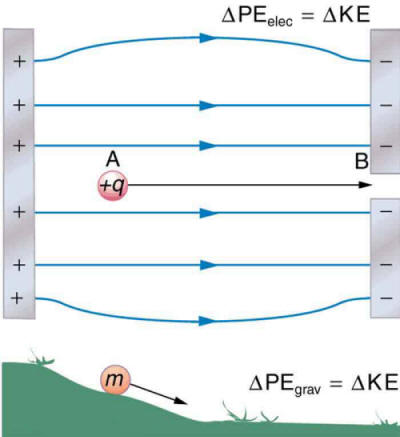
Warm Up: The diagram on the right comes from the online textbook.
- What do you think is the point of the diagram?
- How are "force" and "pressure" different?
- How do these questions relate to current, circuits, and the water analogy for circuits?
Today:
-
Test next class (Tuesday)
-
Some more test preparation:
-
Test format: 12 multiple choice, 4 short answer (includes electric field drawings and charging by induction), 6 problems
-
Formulas you may need:
 You will be given qe, k, and the values of
various metric prefixes.
You will be given qe, k, and the values of
various metric prefixes. -
Some suggestions for a problem-solving algorithm.
 Video explanation
Video explanation -
Can we use the Van de Graaff Generator to do this? Induce charge on two pie plates with opposite charge, using a charged object.
-
New Unit -- Electric Current and Circuits
- Get Unit 9 Packet (PDF) and number the pages. The numbers got cut off :-(
- Notes: Chapter 19.1 (Packet p. 1-2) 19.1 and 20.1 Solutions and Filled-in Notes
- Video of 19.1 notes
- Video of 19.1 practice solutions
Homework: Prepare for the test
 Class
59 Wednesday,
3/16/22
Class
59 Wednesday,
3/16/22Warm Up:
1. Do birds get shocked when they land on power lines? Why or why not?
2. Would a bird get shocked if it landed on a Van de Graaff generator?
3. How can we test #2?
4. Why shouldn't you try #1?
Today:
-
Test next Tuesday (No school Friday or Monday, so Tuesday is like a Monday. Don't forget about the test.)
-
Some more test preparation:
-
Test format: 12 multiple choice, 4 short answer (includes electric field drawings and charging by induction), 6 problems
-
Formulas you may need:
 You will be given qe, k, and the values of
various metric prefixes.
You will be given qe, k, and the values of
various metric prefixes. -
Spend some time coming up with a problem-solving algorithm.
-
Charge some conductors by induction, and explain how this charging works, in terms of movement of electrons.
-
Induce a charge on one pie plate using a charged insulator (which can't touch the plate) and a ground (which can touch the plate).
-
Induce charge on two pie plates with opposite charge, using a charged insulator.
-
Homework: None
 Class
58.5 Tuesday,
3/15/22
Class
58.5 Tuesday,
3/15/22Warm Up: In the tesla coil video on the right...
1. What is creating the music?
2. Why is the guy wearing a metal suit?
3. Why are the sparks jagged? (PhET)
4. What else do you notice the sparks doing?
Today:
-
Check/review homework
-
A8, finish 18.5 notes.
-
Go over clear tape activity. Some more tape questions...
-
Suppose you have a stack of three tapes, stuck to a table.
-
How can you remove them so that two become positive and one becomes negative?
-
How can you remove them so that one becomes positive and two become negative?
-
-
What is the charge of tape that's still on the dispenser?
-
What's the charge of a never-used tape roll, right out of the box?
-
Homework: 18.5 Practice -- except for number 2! (packet pages 13-14): 18.5 Practice Solutions Pennington 18.5 Practice Solutions
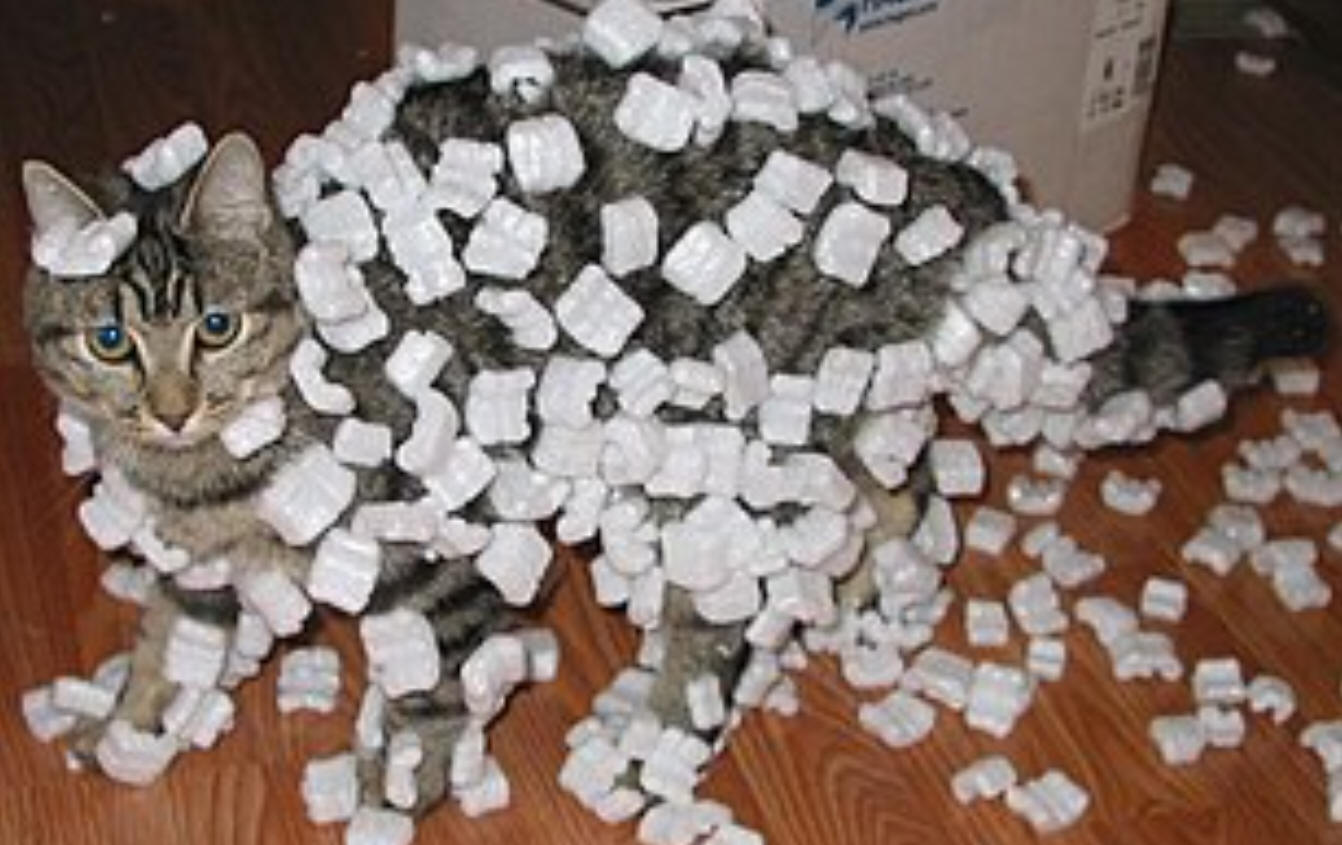
 Class
58 Monday,
3/14/22
Class
58 Monday,
3/14/22Warm Up:
Which of the following should be stated with the greatest certainty? Why?
A) The balloons have the same net charge
B) The cat and the foam "peanuts" have opposite net charges.
C) Both A and B are correct.
D) None of these answers is (are) correct.
Today:
-
Check/review homework
Homework:
-
Complete the problems section of Electrostatics Practice Test (Mr Pennington's Old Test) -- Packet P. 25-26 -- Answer Key

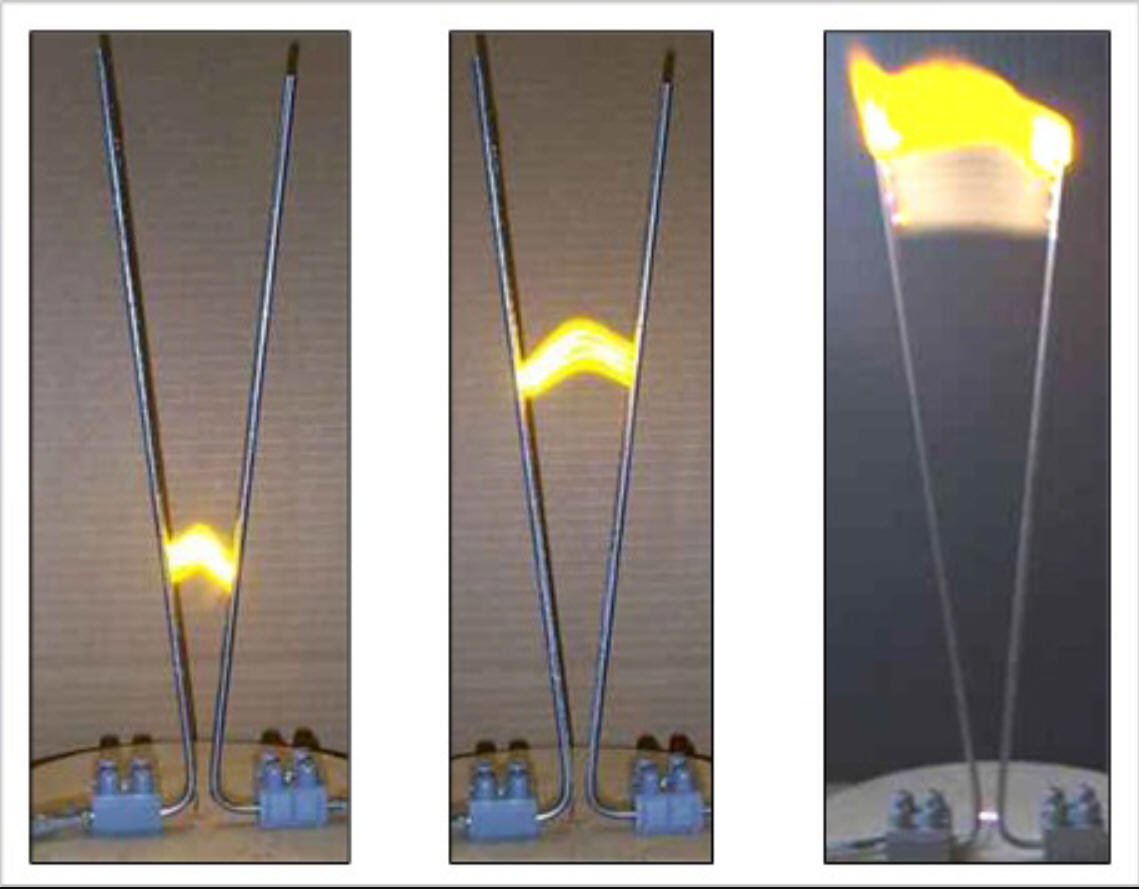 Class
57.5 Friday,
3/11/22
Class
57.5 Friday,
3/11/22Warm Up:
1. What is a spark? Breakdown voltages,
2. What is a Jacob's Ladder? What is its purpose?
Today:
-
Check/review homework
-
Work on tonight's homework
Homework:
-
Complete the multiple choice section of Electrostatics Practice Test (Mr Pennington's Old Test) -- Packet P. 21-24 -- Answer Key
 Class
57 Thursday,
3/10/22
Class
57 Thursday,
3/10/22Warm Up:
1. Diagram C shows two conductors with excess positive charges. Why do the excess charges reside on the conductors' surfaces?
2. Why are the charges closer together near the pointy part of the rightmost conductor? What implications does this have for Van de Graaff generator design?
Today:
-
Return retakes
Try a really long Van de Graaff Chain?
Notes: 18.7 -- Conductors and Fields in Static Equilibrium (packet p. 15-16).
-
Check out the link to online textbook chapter (Openstax College Physics, chapter 18.7)
-
-
Work Time
Homework:
-
Practice: 18.7-18.8 practice (packet p. 17-20) For number 1 on page 17, just do the linear velocity (we skipped the angular motion unit)
 Class
56.5 Wednesday,
3/9/22
Class
56.5 Wednesday,
3/9/22Warm Up:
The deceptively complicated case of the electrified pickle...
Why does the pickle light up? Why does it light up on just one end? Is it always the same end?
Today:
-
Check/review homework -- electric field hockey (Answer key) and 18.4 practice (18.4 Stapleton Practice Solutions)
-
A7/8 -- finish the 18.5 notes (p.12 of packet)
-
Start the 18.7 Notes? (see next class)
Homework:
- None
Warm Up: None
Today:
-
Optional Test Retake (Circular Motion and Gravity)
-
Work on the homework.
Homework:
-
Complete the notes on page 9 of the packet: Chapter 18.4 -- Electric Field (filled-in notes 18.4) Video from 2019
-
Complete the chapter18.4 Practice Problems (packet p.10): 18.4 Practice -- Electric Fields 18.4 Stapleton Practice Solutions 18.4 Pennington Practice Solutions
 Class
55.5 Monday,
3/7/22
Class
55.5 Monday,
3/7/22Warm Up: What's going to happen at the moment that this Van de Graaff Generator is turned on? Why?
Today:
- Check/Discuss the homework.
-
Electric Field: Skip the mathematical aspect of electric field
for now, and jump right into electric field lines.
- Notes: 18.5 (Electric Field lines, packet p. 11-12). Filled-in notes 18.5Video from last year
Tomorrow's Stuff:
-
Optional Test Retake (Circular Motion and Gravity)
-
Tomorrow's Work -- homework, if you spend the whole class retaking the test...
-
Notes (packet p.9): Chapter 18.4 -- Electric Field (filled-in notes 18.4) Video from 2019
-
18.4 Practice Problems (packet p.10): 18.4 Practice -- Electric Fields 18.4 Stapleton Practice Solutions 18.4 Pennington Practice Solutions
-
-
If you think you might want to watch the 2019 Ch. 18.4 notes video in class tomorrow, bring headphones/earbuds.
Tonight's Homework:
-
Answer these questions (Questions with link to simulation)
relating to the
Phet Electric Field Hockey Simulation.
You can use your own paper or print out the sheet.
The simulation should work on a Chromebook or a laptop (but in the
past it has not worked on
iPads or iPhones). If your
computer will run it, the Java version sometimes works better.
 Class
55 Friday,
3/4/22
Class
55 Friday,
3/4/22Warm Up:
1. How does a Van de Graaff Generator Work?
2. What light does the VDG shed on John Travoltage?
Links:
Things to try:
- Hair-raising
- Pith ball
- "Hero Engine"
- Putting out fire
Today:
- Check/Discuss the homework.
- Disclaimer
- Notes: 18.3 -- Coulomb's Laws (packet p. 5) Filled-in Notes
- Video I made last year, explaining how the Electrophorus works
Homework:
-
18.3 Practice (problems 1-5 on packet page 6) Solutions

 Class
54.5 Thursday,
3/3/22
Class
54.5 Thursday,
3/3/22Warm Up:
The electrophorus is charged by rubbing a cat(fur) against the top of an insulating plate (I). Then the conducting plate (C) is placed on top of the insulating plate and is touched by the physicist. Assuming that the cat fur has a strong affinity for positive charge...
1. What is the charge of the plate after it is touched by the scientist?
2. Explain how the conducting plate becomes charged.
3. What is the ground in this demonstration?
Today:
- The electrophorus -- how does it work?
- Check/discuss the homework.
- The test retake (circular motion and gravity) will be offered next Tuesday.
-
Finish the notes we started yesterday -- polarization
-
Video from 2018-19 class -- Sorry for the "terrifying beeping."
- Video I made last year, explaining how the Electrophorus works
Homework:
-
Practice (packet p. 3-4) -- 18.1 (Static Electricity) 18.1 Practice Solutions Video discussion of solutions
-
Answer the questions about the John Travoltage Phet Simulation (packet page 8) Old key to John Travoltage Simulation
 Class
54 Wednesday,
3/2/22
Class
54 Wednesday,
3/2/22Warm Up:
1. If you rub a balloon on your head and then hold it next to your hair, your hair is attracted to the balloon. Why? Triboelectric Series
2. Your hair may also stand on end after being rubbed by a balloon. Why?
3. What events contributed to this gas station fire?
Today:
- Return tests. The test retake (circular motion and gravity) will be offered next Tuesday.
- Get Unit 8 Packet PDF Version
- Preview of things to come: Electrostatics, Electric Current/Circuits, Electricity and Magnetism, Waves/Sound, Optics
-
Notes (packet p. 1-3): 18.1 and 18.2 (Static Electricity & Charge, Conductors and Insulators)
-
Video from 2018-19 class -- Sorry for the "terrifying beeping."
Homework:
-
Complete the Phet Simulation (Phet Link: Balloons and static electricity) questions on packet p. 7. Old key to Balloon/sweater Simulation
-
Optional -- prepare for retake on Tuesday, 3/8
Warm Up:
None
Today:
- Test
Homework:
- None
 Class
52.5 Wednesday,
2/16/22
Class
52.5 Wednesday,
2/16/22Warm Up: What's the point of making an apparatus such as the one on the right?
Today:
Homework:
- Test tomorrow
 Class
52 Tuesday,
2/15/22
Class
52 Tuesday,
2/15/22Warm Up:
The graphic on the right illustrates the possible scenarios for circle problems. Sketch or visualize a scenario based on each bullet point.
Today:
- Check/review homework
- 7/8 -- finish going over the homework that was due yesterday
- 7/8 -- Mr. Pennington's 4 minute drill -- with an extra minute or two thrown in
- Take a look at #8 on page 18, and discuss how it contains Kepler's 3rd Law -- and then some.
- Hard and bouncy spheres -- Marble dropped on an anvil; Steel Ball dropped on an anvil
Homework:
- Practice test #2 Problems (packet p. 15-16) Answers/Solutions
- Complete # 7 and #8 on p. 17 and 18
- Optional Bonus -- see yesterday's homework (due on Thursday, by the end of class)
 Class
51.5 Monday,
2/14/22
Class
51.5 Monday,
2/14/22Warm Up:
In this video, a driver attempts to traverse a large loop-the-loop. In order to safely complete his mission, how many g's do you suppose the driver needs to tolerate? Why? [I believe the height of the loop is around 13m.]
Today:
- Check/review homework
- 7/8 -- discuss leaving early and masks
- Mr. Pennington's 4 minute drill -- with an extra minute or two thrown in
- Take a look at #18 on page 8, and discuss how it is Kepler's 3rd Law -- and more.
Homework:
- Practice test #2 Multiple choice only (packet p. 13-14) Answers/Solutions
- Optional Bonus, due on Thursday -- for an extra 1 percent on the test, calculate the minimum number of gs a driver would need to tolerate in order for their car to maintain constant contact with a 10m radius loop the loop (and show your work!) -- assuming that the driver does not use the accelerator or the brakes once they enter the loop, and that no energy is lost (to friction,etc.) during the loop traverse. To simplify matters, further assume that the centers of mass of the driver and the car are traveling in a 10m radius loop.
 Class
51 Friday,
2/11/22
Class
51 Friday,
2/11/22Warm Up:
1. What is a geosynchronous satellite?
2. What's the difference between a geosynchronous orbit and a geostationary orbit?
 3. What is a
space elevator?
3. What is a
space elevator?
4. Assess the supposed manner in which sentient toilet paper rolls hoist themselves to celebrate the new year.
Today:
- Test retake
- Work time (see homework, below)
Homework: All of this is due on Monday. Tomorrow is the retake day and work time during class.
- #14 & 15 on packet p.6 -- Solutions
- Practice test #1 (packet p. 9-12) Answers/Solutions Video Explanations
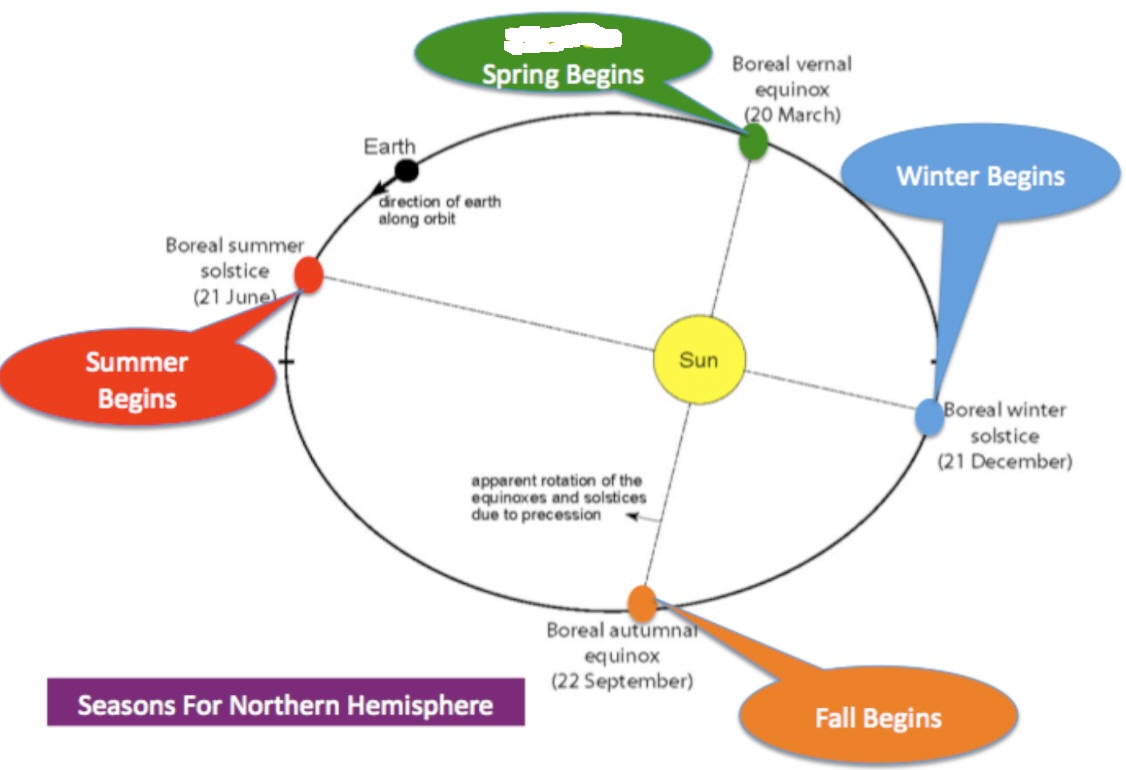 Class
50.5 Thursday,
2/10/22
Class
50.5 Thursday,
2/10/22Warm Up:
According to the diagram on the right...
1. At what approximate date is the Earth orbiting with the fastest speed? When is it orbiting the slowest?
2. Rank our seasons in order of length. Answer
3. Why are elliptical foci called foci? Is anything being focused, and, if so, what and how?
Today:
- Check/review homework (orbit acitivity)

- Notes: Kepler's Laws Video from last year. Notes start at around 18 minutes? Before that, I went over the answers to the orbits activity. Last year we did the orbit activity first.
- Unit 7 Packet (pdf version of unit 7 packet)
Tentative plan before break:
- This Friday -- test retake; work time for anyone who isn't retaking the test
- Monday -- go over practice test #1. Work on practice test #2
- Tuesday -- review practice test #2. Do the "4 minute drill" at the back of the packet.
- Wednesday --? Maybe some interesting rotational stuff
- Thursday -- Test over circular motion, gravity, Kepler
- Friday -- Return tests. Maybe some more interesting rotational stuff??
- Test retake -- Friday, march 4th
Homework: All of this is due on Monday. Tomorrow is the retake day and work time during class.
- #14 & 15 on packet p.6 -- Solutions
- Practice test #1 (packet p. 9-12) Answers/Solutions Video Explanations

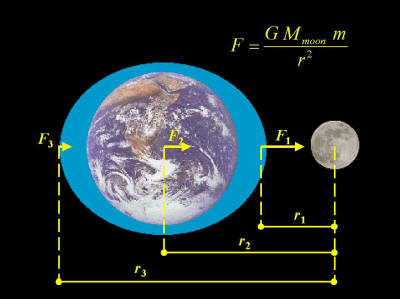 Class
50 Wednesday,
2/9/22
Class
50 Wednesday,
2/9/22Warm Up:
From 2016-2017 EPS 200...
The Sun, Earth, and Moon are continually spaghettifying one another. On Earth, we see the effects of this spaghettification in the form of tides.
1. What causes spaghettification?
2. How much gravitational force do the Sun and Moon each exert on 1,000,000 pounds of water?
3. Even if there were no water on Earth, there would still be tides, just as there are tides on the Moon. Describe these tides.
4. Why do we always see the same side of the moon?
5. Is the Earth's 24 hour rotational period speeding up or slowing down over time? Answer
Today:
- Kepler's 1st 2 Laws -- Orbits Activity (Instructional Video from Last Year)
- Unit 7 Packet (pdf version of unit 7 packet)
Homework:
- Finish the orbits activity (pages 7-8)
- Directions -- Video from Last Year)
- Discussion -- Video from last year. I discussed the answers near the beginning of this video.
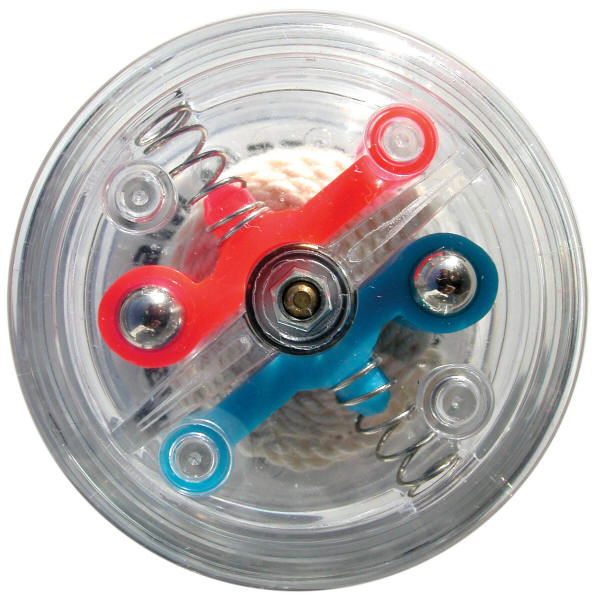 Class
49.5 Tuesday,
2/8/22
Class
49.5 Tuesday,
2/8/22Warm Up: How does this yo-yo work? What do the springs and steel balls do?
Today:
- Check/review homework
- No new notes -- Kepler's Laws tomorrow
Homework:
- #10 & 11 on p. 5 Solutions (including p. 5) Video Solutions to 4, 8, 10, 12, 13.
- #1-5 on p. 17 Answers/Solutions
- Test retake on Friday
 Class
49 Monday,
2/7/22
Class
49 Monday,
2/7/22Warm Up:
1. Is this an answerable question -- Approximately how fast is the jogger in this video moving?
2. If the jogger turned around and jogged the other way, would he feel any different?
3. What must move in order for the person to experience simulated gravity... the space station, the person, neither, or both? What does "move" mean in outer space?
Today:
- Return tests
- Notes: Circular motion and Gravity -- p.1 & 3 of packet Unit 7 Packet (pdf version of unit 7 packet)
Homework: Solutions Video Solutions to 4, 8, 10, 12, 13.
- #1-3 on p.2
- # 8 on p.3
- #12-13 on p.5-6
Warm Up: None
Today:
- Test
Homework:
- None
 Class
47.5 Wednesday,
2/2/22
Class
47.5 Wednesday,
2/2/22Warm Up: How do you remove the coin from the YOT?
Today:
- Check/review homework
- Questions about the test?
- If you want more practice, here's one of Mr. Pennington's old tests... Mr. Pennington's Old Momentum Test. Answers/Solutions. I can print one if you want.
Homework:
- Study for tomorrow's test.
 Class
47 Tuesday,
2/1/22
Class
47 Tuesday,
2/1/22Warm Up: This Top Gear episode features a Renault Modus (compact car) vs. Volvo wagon in a head-on crash.
1. What will happen?
2. Which is safer, a car that crumples in a crash or a car that is more rigid?
Today:
- Check/review homework
- If you want more practice, here's one of Mr. Pennington's old tests... Mr. Pennington's Old Momentum Test. Answers/Solutions.
- New unit -- circles and gravitation
- Unit 7 Packet (pdf version of unit 7 packet)
- Introduce topic and solve "example problems" on packet page 1. Solutions Video of class from last year -- pretty good, I think
- Brief look at centripetal acceleration derivation in online textbook.
Homework:
- Circular motion problems 1-3 on page 2 of the Unit 7 packet Solutions
- Test on Thursday -- be ready.
 Class
46.5 Monday,
1/31/22
Class
46.5 Monday,
1/31/22Warm Up: Suppose I place some foam on my table top, and then I shoot it with the two darts in the picture, using the same Nerf ® gun. Compare the effects of the two darts impact on the motion of the foam.
Today:
- Check/review homework
- Finish page 5 of the notes
Homework:
- Complete the short answer section of the practice test, (#1-3 on pages 14 and 15) Some answers
- Test on Thursday
 Class
46 Friday,
1/28/22
Class
46 Friday,
1/28/22Warm Up: The photograph on the right shows a homemade "Gauss Gun." In the picture there are 9 steel spheres and 4 cube-shaped magnets. The operator is preparing to roll one sphere toward a magnet. What will happen, and how will it work?
Today:
- Check/review collisions lab and questions (p.11-12) p. 12 answers
- 10 minutes to wrap-up and submit the ballistic pendulum "lab
reports." Share your results.

- Use my ballistic pendulum initial velocity calculator to check your velocity calculation(s)
- Work time -- start on the homework
Homework:
- Two things... 1) multiple choice questions on page 13 of the
packet. Answers --
 2) problems on pages 15 and 16 of the
packet
Solutions
2) problems on pages 15 and 16 of the
packet
Solutions - Test next Thursday
 Class
45.5 Thursday,
1/27/22
Class
45.5 Thursday,
1/27/22Warm Up:
1) How can we find the coefficient of restitution of this racquetball?
2) What's wrong with question number 1?
Today:
- Finish ballistic pendulum data collection.
- Make sure that you have all of the data for the collisions lab.
- If you have time, begin working on the collisions lab calculations and questions and/or calculate your ballistic pendulum velocities.
Homework:
 Class
45 Wednesday,
1/26/22
Class
45 Wednesday,
1/26/22Warm Up:
1. What's interesting about a Newton's Cradle?
2. What concepts does a Newton's Cradle demonstrate?
3. What is the coefficient of restitution for a Newton's Cradle?
Today:
- Check/review homework
- Ballistic Pendulum Activity:
- Design and conduct an experiment to answer one of these
questions. Fill out the lab sheet as you go. Time is
short, so keep it simple. You may just have time for one
trial.
- How does projectile mass projectile affect the impulse of the launch?
- How does barrel length affect projectile velocity?
- Other -- make up your own interesting and testable question.
- Make a cylindrical projectile (or projectiles) with a
diameter no greater than 1.5cm and a length no greater than
1.5cm.

- Design and conduct an experiment to answer one of these
questions. Fill out the lab sheet as you go. Time is
short, so keep it simple. You may just have time for one
trial.
- Unit 6 Packet (Unit 6 Packet -- PDF Version)
Homework:
 Class
44.5 Tuesday,
1/25/22
Class
44.5 Tuesday,
1/25/22Warm Up: A cart is released from the top of a ramp. The cart rolls a distance dc to the bottom of the ramp, hits a force sensor, and rebounds up the ramp a distance of ds.
1. "If we apply this kinematics formula (see diagram) to both the cart's descent and ascent, we can assume that the acceleration is the same in both cases." Is the previous statment true? Explain.
2. Write a formula for coefficient of restitution, given a cart's closing distance (dc) and separation distance (ds) in this scenario.
Today:
- Check/review homework
- Notes: Ballistic pendulums, pages 5 and 6.Video from last year's class
- On yesterday's lab sheet, use your average closing distance and separation distance data to calculate your cart's coefficients of restitution.
- Unit 6 Packet (Unit 6 Packet -- PDF Version)
Homework:
- Complete #16-18 on page 10 of the packet. The answer to number 18 is at the bottom. Answers to 16 and 17 are provided with the solutions.
-
Work on Collisions Lab questions? They are due on Thursday
 Class
44 Monday,
1/24/22
Class
44 Monday,
1/24/22Warm Up:
How can an understanding of momentum help you turn a towel into a better whip?
Today:
- Does anyone want me to add a science course recommendation? (even if another teacher has already entered recommendations)
- Check/review homework
- Collisions Lab (packet pages 11-12)
- Unit 6 Packet (Unit 6 Packet -- PDF Version)
Homework:
- Finish Lab questions -- Due on Thursday
- Problems 11-13 on packet p. 8-9. Answers are at the bottom of page 10.
 Class
43.5 Friday,
1/21/22
Class
43.5 Friday,
1/21/22Warm Up:
1. What will happen if I hold a tennis ball on top of a basketball and drop them to the floor together?
2. Why does this happen?
Today:
- Check/review homework
- Notes: Elastic/Inelastic Collisions and Coefficient of
Restitution (p.3-4
of the packet)
- Notes key (In the notes key, I made some mistakes on #22 -- coefficient of restitution example -- I believe the answer is correct, but the variables are mislabeled confusingly.)
- Video of notes from last year
Homework:
- Problems 14 & 15 on packet p. 9-10. Answers are at the bottom of page 10.
 Class
43 Thursday,
1/20/22
Class
43 Thursday,
1/20/22Warm Up: Let's actually solve the warm-up problem from yesterday.
Today:
- Unit 6 Packet (Unit 6 Packet -- PDF Version)
-
Notes: Momentum, Impulse, and Conservation of Momentum (p.1-3
of the packet)
- Notes key
- Videos from last year:
Homework:
- Problems 1-10 on packet p. 7-8.
Answers are at the bottom of page 10.
-
Homework help video for problems 7-10
 Class 42.5 Wednesday,
1/19/22
Class 42.5 Wednesday,
1/19/22Warm Up: When the two blocks collide, they stick together. What is the shared velocity of the two blocks after the collision?
Today:
- Course Recommendations for Juniors -- promotional materials...
Homework:
- None
 Class 41.5 Friday,
1/7/22
Class 41.5 Friday,
1/7/22Warm Up: A student wants to launch a pencil as far as possible using energy stored in exactly two rubber bands. The sharpened pencil has fins on its eraser end and a protruding paper clip attached near the nose. The pencil is to be launched by a looped string that connects to the paper clip on one end and the rubber bands on the other. If the teacher has placed a limit on the total amount of force that can be used in launching process, would any one of these configurations be better than the others? Explain.
Today:
- Last minute exam questions?
- Disassemble trebuchets. If you really and truly want to keep yours, you can keep it.
- Trebuchet slides are due at midnight -- for contest purposes. You can turn it in later, but that may be too late for the contest.
Homework:
- Exam review
Warm Up: None
Today:
- Midterm review --
- **The formula list in Google Classroom has been updated**
- Updated Google Doc with notes from this week's classes -- In-Class Midterm Review
- Back to Kinematics in 2-D -- Range Formula
- Finish forces
- Problems with Forces and kinematics
- Specific Tools needed to solve force problems
- Weight
- Tension/Normal Force/Contact Force
- Friction
- 2-D force problems
- Static problems
- Blocks, pulleys, and ramps
- Energy -- take a look at the formulas on the formula sheet
- Project work time
Homework:
- Exam prep
Warm Up: What is an algorithm?
Today:
- Link to notes from last class
- Midterm review -- Newton's Laws (Forces)
Homework:
- Exam prep
Warm Up:
1. List all of the variables that show up in kinematics problems.
2. List all of the kinematics formulas.
3. In projectile motion problems, which
Today:
- "Notes sheet" options.
- Option 1: You can hand-write (or draw) anything you want on both sides of an 8.5"x11" sheet of paper, and use that paper on the exam. You, personally, must make your own notes sheet. You must turn in your notes sheet with your exam.
- Option 2: You can opt out of the notes sheet and recieve an extra 2% on your exam grade.
- Not an option: using a formula sheet that I provide. If you want the formulas, put them on your notes sheet.
- Midterm review -- Kinematics (1D and 2D)?
- Questions about the multiple choice review material?
- Problem Solving (work through example problems) -- Necessary
information and algorithm
- Givens -- stated and implied
- Trig functions and inverse functions, Pythagorean Theorem
- Manipulating Vectors -- adding, subtracting, and resolving
- River problems
- Identifying components and resultant
- Solving
- Projectiles
- Vertical motion only -- "free-fall"
- 2-dimensional motion
Homework:
- Study. Make a notes sheet -- at least write down the formulas, even if you don't plan to use the sheet on the exam. Instead of copying specific problems, write down problem-solving processes (algorithms).
 Class
39.5 Monday,
1/3/22
Class
39.5 Monday,
1/3/22Warm Up: 1. How would you find the efficiency of this trebuchet?
2. How can you find the center of mass of an irregularly shaped object like the one below?

Today: Determine your trebuchet's efficiency. Make a slideshow (like this one) showing your process.
- Energy Input:
- Determine the amount of potential energy that is lost by your trebuchet as it launches. Use the same method that I used in slide 2 of my slideshow.
- Create slide 2 of your slideshow. Include two photos illustrating the change in position of the center of mass of the falling components.
- Energy Output: On a desktop or laptop...
- Find your video in this Google Drive folder -- The dividing line between 5/6 and 7/8 is somewhere around file number 250. Note that most file names include an E, but some don't.
- Download your video.
- Open the Vernier Video Analysis App, and insert your video.
- Click "System" and "scale," and then stretch the scale tool to known points on the meter stick in the video. Enter this distance in meters.
- Use the "add" tool to click on the positions of the projectile just before it is launched. If it's blurry, I find it easiest to click on the front of the blur.
- Take a screenshot of your projectile and the blue dots from the vernier app, and paste this into your slideshow on page 3.
- Calculate the projectile speed:
- Select the Xvelocity and Yvelocity data for these points. Copy the data.
- Open a spreadsheet, and paste the data.
- Next to the X and Y velocity columns, create a new column that calculates speed. You should know how to do this, but ask if you need help.
- To determine your projectile's actual speed, you can average the speeds, or you can use the one that you think is probably correct. Highlight (or make bold) the speed that you are going to use.
- Take a screenshot of your spreadsheet calculations, and paste that into your slideshow on page 3.
- Efficiency. On slide 4, show your efficiency calculations.
Homework:
- Review the midterm study guide. If you have questions, write them down and ask them in class or via email.
 Class
39 Wednesday,
12/22/21
Class
39 Wednesday,
12/22/21Warm Up: Some cultures celebrate a character called Santa Claus, who delivers presents around the world in a sleigh. This event occurs over a time interval known as Christmas Eve. If Santa were to deliver a present to every child who believes in him, how fast would Santa need to accelerate between stops in order to deliver all of the presents on Christmas Eve? Santa Claus from an Engineer's Perspective
Today:
-
All of the Midterm Exam review stuff is now in Google Classroom. The only thing I haven't provided is answers to the multiple choice. Those answers will be available later. Try the questions first. You can email me when you want the answers.
-
Trebuchet Contest Day Procedure...
-
Preserve your trebuchet! After you launch, store it in a safe place, and do not dismantle it. We won't have time today to find the trebuchets' centers of mass (which we need in order to calculate input energy, and, thus, efficiency).
-
Record the mass of your projectile + sling. It should be at least 3 grams. If it's over weight, you can trim it down with scissors, but it's not clear that this will make a positive difference.
-
Record the overall mass of your trebuchet (everything but the projectile and sling).
-
Record the highest height reached by any part of your trebuchet, during the throw. Do not include the projectile, sling (fishing line), or finger.
-
Have Mr. Stapleton video your trebuchet throwing its projectile. This video will be used to determine energy input and energy output.
-
Have Mr. Stapleton confirm and record your throwing distance.
-
Enter today's data in this form, so that we can compare preliminary standings. Bear in mind that overall scores depend on both distance and efficiency.
-
Store your trebuchet carefully, so that you can finish the analysis after break.
-
Homework:
- Review the midterm study guide. If you have questions, write them down and be prepared to ask them after break.
Warm Up: Let's discuss the Midterm.
Today:
-
Midterm Exam Information (It's all in Google Classroom)
-
Weight: 20% of Semester 1 Grade
-
Format: 100 Total Points -- 25 Multiple Choice (1 point each), 15 Problems (5 points each)
-
Problem Distribution:
-
1-D Kinematics (3)
-
2-D Kinematics (4)
-
1-D Newton's Laws (3)
-
2-D Newton's Laws (2)
-
Work and Energy (3)
-
-
Practice Material:
-
Multiple Choice Questions(PDF version) -- 112 questions, 25 of which will appear on the exam.
-
-
Links to videos explaining problem solutions are available in Google Classroom. In fact, everything is in Google Classroom!
-
-
Work time.
Homework:
- Optional -- Exam review. If you complete the multiple choice questions over break, and you want to see my answers before we return to school, email me your request and picture(s) your answers. I won't be checking my email very often, but if I see your request and answers, I will share my answers with you. If you have questions about the multiple choice, you may also email me your questions.
Warm Up: None
Today:
-
Optional Test Retake
-
Work time -- as quietly as you can
Homework:
- None
 Class
37.5 Friday,
12/17/21
Class
37.5 Friday,
12/17/21Warm Up:
1. How does a hydraulic lift facilitate work with a small input force and a large output force?
2.
How do gears work in a car with a
manual transmission?



Today:
-
Work time.
Homework:
- None
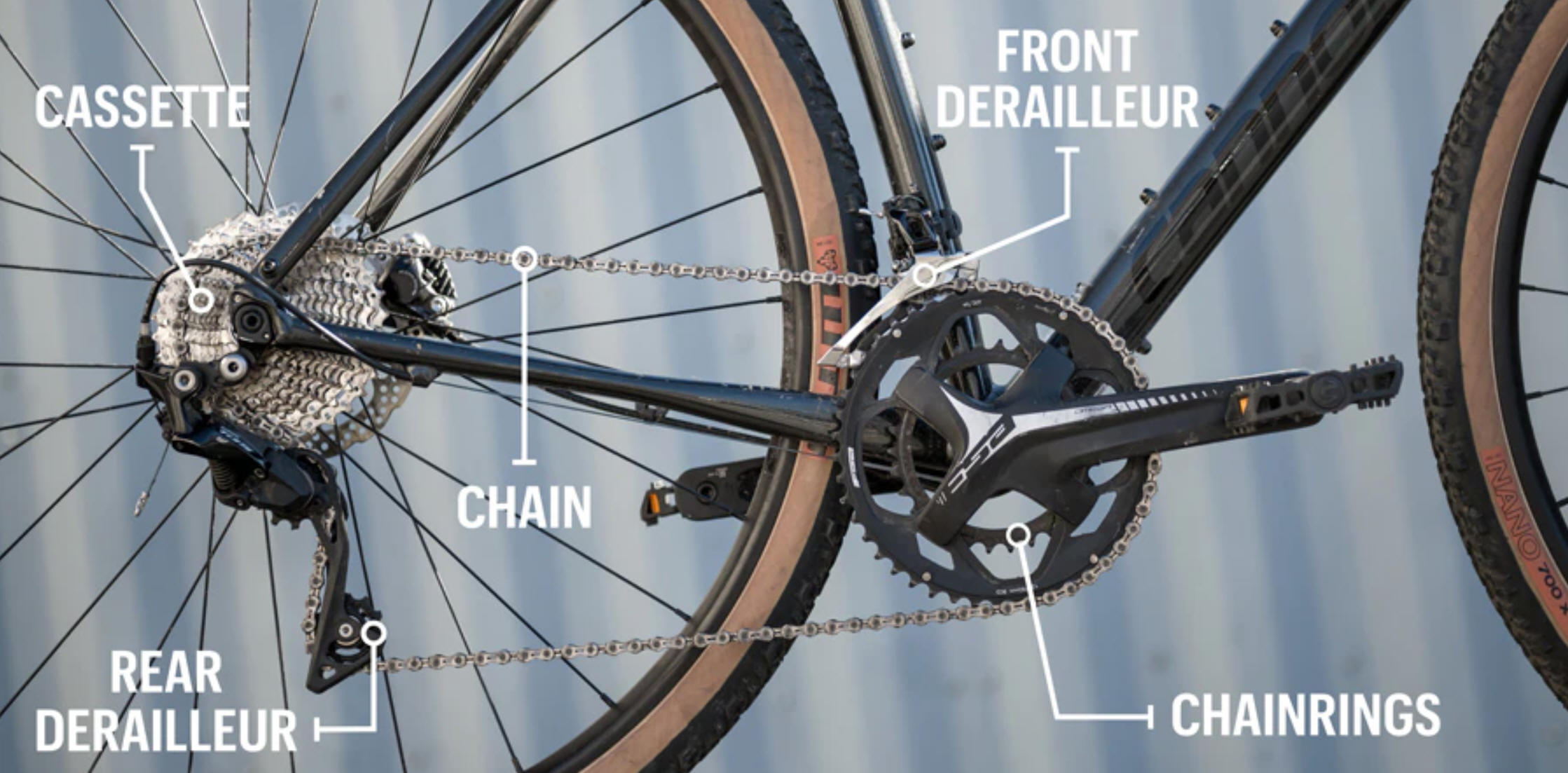 Class
37 Thursday,
12/16/21
Class
37 Thursday,
12/16/21Warm Up:
1. What is the point of having a variety of gears on a bicycle? (or a car, motorcycle, etc.)
2. Why is this effective?
Today:
-
Note one more addition to the trebuchet scoring process, dealing with trebuchets that exceed the 0.7J input energy limit.
-
Work time.
Homework:
- None
Warm Up: Click this link and answer the trebuchet question for our Physics PLC.
Today:
-
Return tests.
-
Trebuchet work time
Homework:
- None
Warm Up: None
Today:
-
Test over work and energy
Homework:
- None
 Class
35.5 Monday,
12/13/21
Class
35.5 Monday,
12/13/21Warm Up:
1. Which arm ( shown in yellow, in figure 1) will wobble the least on the axle? Why?
2. Which arm (figure 2) will experience the least friction as it rotates? Why?
3. Which arm (figure 3) is least likely to bend the axle? Why?
WhicToday:
-
Work time. Build your trebuchet
-
Project Guidelines (with two minor updates) Glue Chuckin' Festival
-
-
Questions about the test?
Homework:
- Test tomorrow
Warm Up:
1. Is tension the same in all parts of the slinky on the right?
2. What happens when you suspend a slinky (as shown in the photo on the right) and then drop it?
3. Why?
Today:
-
Check/review homework
-
Trebuchet research and design.
-
Project Guidelines Glue Chuckin' Festival
-
Some types of trebuchets:
-
-
B5/6 --Emergency Drill Slide Decks Fire Egress Run-Hide-Fight/Resist . "On slide two of the Fire Egress slidedeck, please emphasize that students should seek the closest exit to leave the building."
-
B5/6 -- Questions 5 and 6 on Mr. Pennington's test could be fixed with a simple change. What is the change?
Homework:
- Test on Tuesday.
- Be ready to start building your trebuchet on Monday.
 Class
34.5 Thursday,
12/9/21
Class
34.5 Thursday,
12/9/21Warm Up: How could we measure the efficiency of this trebuchet?
Today:
-
Check/review homework
-
Mr. Pennington's "4 Minute Drill" on page 16. Answers
Homework:
- Energy conservation drill (p.16 of packet) Solutions (I did these quickly, without checkig my work, so it's possible that there are mistakes).
Warm Up:
1. A lightweight object and a very heavy object are sliding with equal speeds along a
level frictionless surface. They both slide up the same frictionless hill.
Which rises to a greater height before coming to rest?
A) The lightweight object, because it weighs less.
B) They both slide to the same height.
C) The heavy object, because it has greater kinetic energy.
D) Cannot be determined from the information given.
Today:
-
Check/review homework
-
Project Preview -- EHS Physics Glue Chuckin' Festival
-
Test retake time
Homework: Complete the problem section of Mr. Pennington's 2015-2016 Test on p. 14-15 of the packet. Solutions

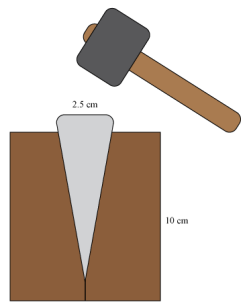

Warm Up:
The pictures on the right all show simple machines. Simple machines allow the same work to be done with more convenient combinations of force and distance.
1. Which "machine" is fundamentally different? Why? If you don't have a quick answer to this, move on to the other questions and come back to this one.
2. Identify the task in each picture.
3. For each picture, identify the machine (s).
4. For each machine, tell how the machine alters the distance over which force must be applied by the human using the machine.
5. How does the machine alter the force that the human must apply?
Today:
-
Check/review homework
Homework: Complete the multiple choice section of Mr. Pennington's 2015-2016 Test on p. 11-13 of the packet. Solutions
 Class
33 Monday,
12/6/21
Class
33 Monday,
12/6/21Warm Up: Suppose I hang a spring from the ceiling. I then hook a 200g mass to the bottom end of the spring and let go. The mass falls and bobs up and down until it finally comes to rest. The spring's constant is k = 4N/m.
1. Does the spring have more total energy at its low point or at its final resting point?
2. How much work is done by friction during the time the weight is bobbing?
Today:
-
Check/review homework
-
Notes: Page 8 -- Other Energy, Electrical Energy Units, Efficiency Filled-in notes Video from last year
-
Last 30+ minutes -- Test retake time
Homework: Complete the rest of packet p.9-10 (#4-11, "More work and energy practice problems") solutions Video explanations
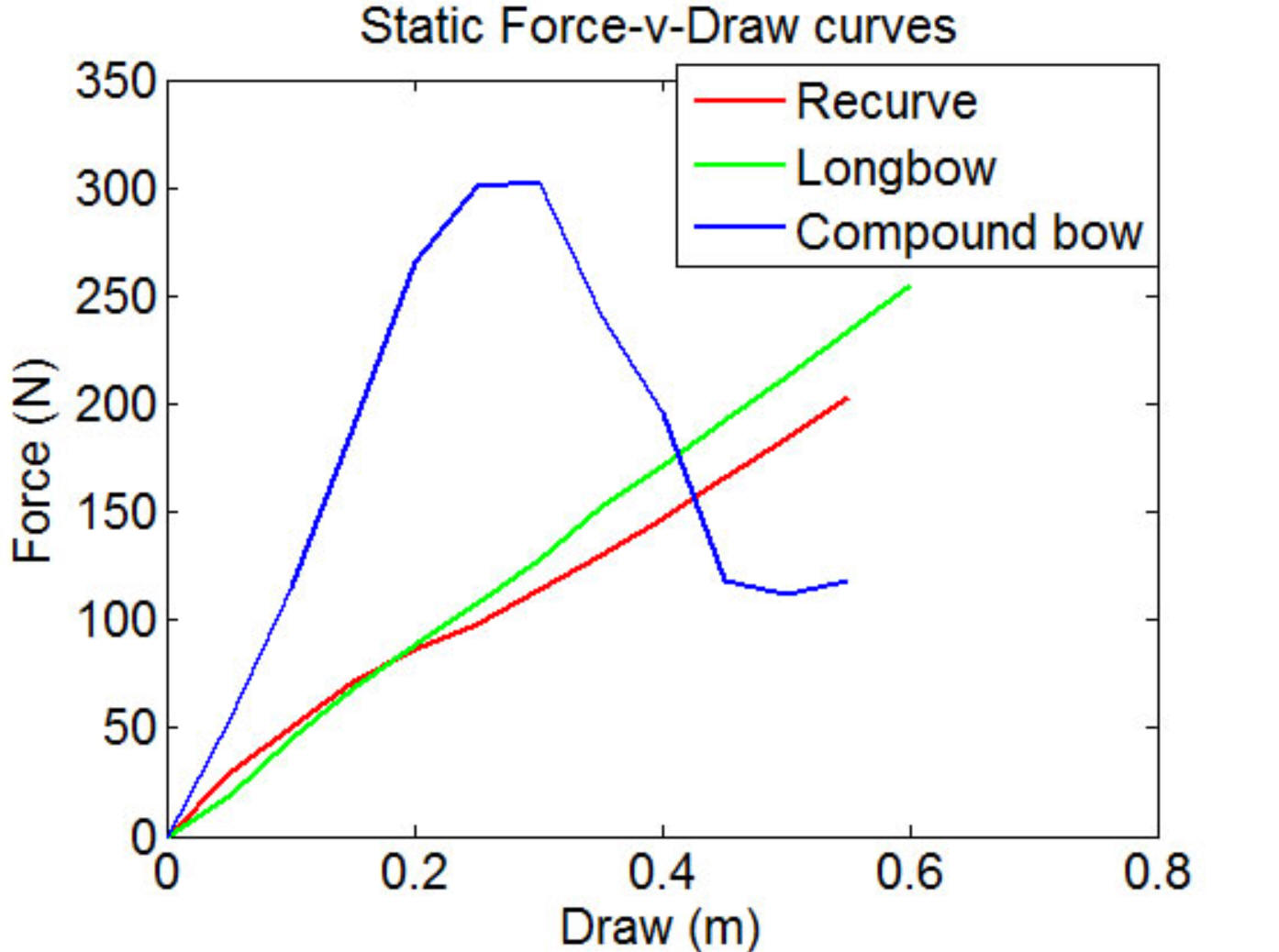 Class
32.5 Friday,
12/3/21
Class
32.5 Friday,
12/3/21Warm Up: Assuming that all three bows are drawn to a distance of 0.5m...
1. Which bow stores the most energy when it is drawn to this distance?
2. Estimate the energy stored in each bow.
Today:
-
Presentation of Water Rocket Prizes (during 7/8)
-
Check/review homework
-
Springs notes (packet page 8) Notes key
Homework: Two parts!
- Complete page 6 (#2 of the practice quiz) of the packet Solutions Video Solutions
- #1-3 on page 9 (More Work and Energy Practice Problems) solutions Problem #3 clarification
 Class
32 Thursday,
12/2/21
Class
32 Thursday,
12/2/21Warm Up:
1. Can you guess what the "sisyphus train" does?
2. How did it get that nickname?
Today:
-
Return stuff -- including tests
-
Test Retakes: I will reserve at least 30 minutes at the end of class next Monday and Wednesday, for retakes. I won't be putting solution videos in Google Classroom, because I think all of the necessary explanation is provided in the homework section of class 30, below. I did put the answers and solutions in Google Classroom, in the form of a spreadsheet.
-
In case you're wondering how all of the tests and projects are being weighted, here's my spreadsheet.
-
Finish the notes on conservation of mechanical energy (pages 2-3)
-
Together, work on #6 on page 4. Here's a video explaining #6.
-
Begin the homework
Homework: Complete page 5 of the packet. Solutions Video for problem 1 (#1 of the practice quiz)
 Class
31.5 Wednesday,
12/1/21
Class
31.5 Wednesday,
12/1/21Warm Up: What will happen to kinetic energy, potential energy, thermal energy, and total energy of the skateboarder during a ride in the half pipe? A) with zero friction B) with a lot of friction
Today:
-
Conservation of energy notes
-
A quick "dipstick" question for our physics PLC discussion. Please answer.
Homework: None
Warm Up: No warm up -- test today
Today:
-
Test
-
Start on the homework, if you haven't done it already.
Homework:
-
Check last night's homework using the answers below. If you missed any of them, watch the corresponding part of this video, where I explain my solutions. We will not go over the homework in class (unless you watched the video and still have questions).
-
Homework answers: 1a. 40J 1b. 400W 1c. 21.7m/s 2a.161,040J 2b. 0.49 Snickers 3a.17.8N 3b. 535J 3c.17.7m/s 4. 0.67hp 5a. 604,747J 5b. 201,582W 5c. 270hp 5d. 43.8 5f. 65.7m
-
Here are links to the written solutions shown in the video...
 Class
30.5 Monday,
11/29/21
Class
30.5 Monday,
11/29/21Warm Up: Do you know how to make a cloud in a 2-liter bottle, using water and a small amount of smoke? Can you explain it in terms of work and energy?
Today:
-
Return old tests.
-
Begin new unit -- work and energy
-
Notes: Work, Power, Energy (video from last year's class)
Homework:
-
Test tomorrow (Newton's Laws in 2D)
-
Work and Energy Practice Problems #1-5 (on p. 3-4 of the packet) -- helpful video
Warm Up: None
Today:
-
Note -- There was a mistake on problem #2, on page 11 of the packet. I meant to change the coefficient of friction to 0.1. At 0.3, the system does not accelerate.
-
Take tests/retakes
-
Work time
Homework:
-
Optional -- More Test practice -- packet pages 11-12. Solutions
-
If you want to re-submit your project sheets, do so by the Tuesday after break.
 Class
29.5 Thursday,
11/18/21
Class
29.5 Thursday,
11/18/21Warm Up: Why does tension show up so often in physics problems? Is tension overrated and overrepresented?
Today:
-
Check/discuss homework
-
Does anyone want to start on the Unit 4 test today?
Homework:
-
Optional -- More Test practice -- packet pages 11-12. Solutions
-
If you want to re-submit your project sheets, do so by the Tuesday after break.
 Class
29 Wednesday,
11/17/21
Class
29 Wednesday,
11/17/21Warm Up:
A waiter is delivering a chunk of bone, basted in synovial fluid, to some dinner guests. Touching only the serving tray (also made of bone), the waiter must deliver the dinner bone to the guests, and place it carefully on their table. Assuming the guests' table is to our left in the picture, describe what the waiter would need to do in order to make this happen? Can you sketch the forces on the bone using the head-to-tail method? [Let's just assume that the bone is frictionless.]Today:
-
Return stuff
-
Check/discuss the homework
-
Do problem #3 on page 6 of the packet. Solutions to 1-4 on p 5 and 6
-
Work time -- practice test.
-
If you want to try to take this test early, tomorrow and/or on Friday, you can do that and still have the opportunity to take and retake the test after break. I should be able to grade it quickly and get it right back to you.
Homework:
-
Last year's retake, on pages 7-10 of the packet. Here's a spreadsheet with the answers. You can look at the formulas for hints to the solutions. Written solution to number 3.
-
If you want to re-submit your project sheets, do so by the Tuesday after break.
 Class
28.5 Tuesday,
11/16/21
Class
28.5 Tuesday,
11/16/21Warm Up:
1. Cheryl wants to use some string and a nail to hang a treasured portrait of great-great-grandfather Ernesto as a young man. The portrait is rather heavy. Rank the three configurations on the right according to their risk of exceeding the breaking strength of the string.
2. How are static equilibrium and dynamic equilibrium different in physics problems?
Today:
-
Return the project sheets. I plan to post some more helpful directions tonight.
-
Check and review homework
-
Do problem #1 on page 4 of the packet. (Unit 4 Packet PDF version) Video from last year
Homework:
-
Complete # 2 from page 5 of the packet. Solutions
-
If you want to re-submit your project sheets, do so by the Tuesday after break
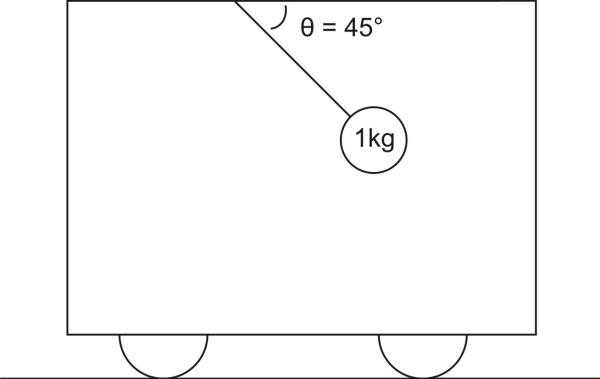 Class
28 Monday,
11/15/21
Class
28 Monday,
11/15/21Warm Up:
A 1kg mass is suspended by a string from the ceiling of a fully-enclosed train car. The angle shown remains constant.
1. Describe the motions of the mass and the train car in qualitative terms.
2. How can we find the tension in the string?
3. How can we describe the motions of the mass and the train car in quantitative terms.
Today:
-
Turn in project sheets -- one set per group. All names at the top.
-
Get the Unit 4 Packet PDF version. Number the pages (I forgot).
-
Notes -- Bodies on Inclines (packet p 1) -- Video from last year
-
Do another example problem (like #2 from the packet)
Homework:
-
Complete 1-3 on pages 2 -4 of the unit 4 packet. Answers and Solutions
 Class
27.5 Friday,
11/12/21
Class
27.5 Friday,
11/12/21Warm Up: One end of a rope is attached to the Gladys' belt. Gladys is pulling directly downward on the other end. Assuming that the pulley and rope are massless and fictionless, how much downward force must Gladys apply in order to ascend? Gladys weighs 500N.
Today:
-
Return tests
-
finish the project sheets.
Homework:
-
Project sheets are due on Monday. One per group.
-
The optional test retake day is next Friday.
Warm Up: None
Today:
-
Test -- Newton's Laws in 1-D
-
You CAN have time tomorrow to finish the project sheets.
Homework:
-
Rocket analysis sheets are due on Monday (one set per group). After your project sheets are graded and returned, your group will get one chance to correct your work and resubmit it for a better grade.
-
The optional test retake day is next Friday.
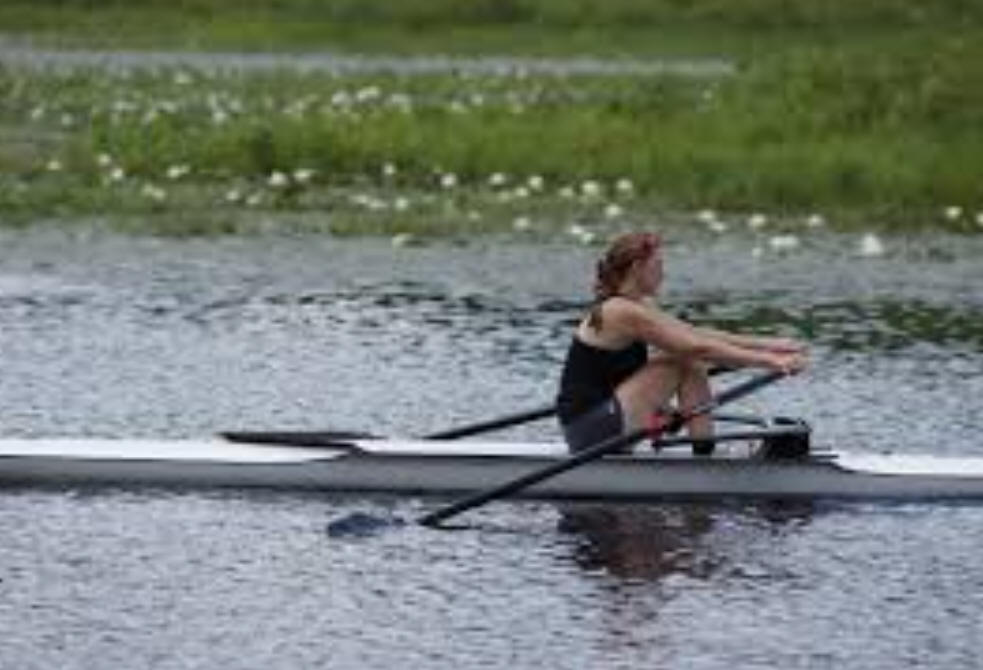 Class
26.5 Wednesday,
11/10/21
Class
26.5 Wednesday,
11/10/21Warm Up: The 50kg rower in the photo is accelerating at a rate of -1m/s2. She is pulling against the oars with a force of 100N. Calculate and show all of the forces acting on the rower.
Today:
-
Project work time
Homework:
-
Test Tomorrow
-
Rocket analysis sheets are due on Monday (one set per group). After your project sheets are graded and returned, your group will get one chance to correct your work and resubmit it for a better grade.
 Class
26 Tuesday,
11/9/21
Class
26 Tuesday,
11/9/21Warm Up: This is a graph of one group's "pressure altitude" data. The graph shows altitude vs "elapsed seconds." What do you notice? Can you explain any of its oddities?
Today:
- If you didn't finish the video analysis yesterday, finish it today.
- As soon as you find your rocket's time aloft, enter it (along with the file name of your video in the Google Drive folder) into this form.
- Complete part 2 of the rocket analysis PDF version
- If you want to use my correction spreadsheet for #13 and/or #14, here it is.
- You can have project work time today and tomorrow, but we will be starting something new on Friday. The rocket analyses are due on Monday. Turn in one set of sheets of paper as a group.
- Test on Thursday.
Homework:
-
Rocket analysis sheets are due on Monday (one set per group). After your project sheets are graded and returned, your group will get one chance to correct your work and resubmit it for a better grade.
-
Test on Thursday -- see class #25 homework for more study materials
 Class
25.5 Monday,
11/8/21
Class
25.5 Monday,
11/8/21Warm Up: How many water bottles are used to launch this game show contestant? Is this for real?
Today:
- Collect Rocket Video Analysis Data and begin calculations.
- Test on Thursday.
Homework:
-
Work on video analysis calculations. Compare answers with your group tomorrow.
-
Test on Thursday!
Warm Up: None -- rocket launch
Today:
-
Prepare for launching.
- Record your rocket's 1) dry mass with sensor and foam, 2) added water volume, 3) overall length
- Add water -- carefully. Pour very slowly from a graduated cylinder. Clifford Heath's Water rocket simulator -- seems to underestimate the performance of heavier rockets, but seems to be a good indicator of the best water volume to use.
- Optional Sensor Data Collection Plan...
- Don't put your sensor in your rocket until you're almost ready to launch. We will have duct tape outside to close up your rocket.
- Do pay attention to the name on your probe.
- When you insert the probe, make sure that the button is not getting pressed. Also, insert it with the positive Z axis facing up (like the picture from yesterday).
- Once your rocket is on the launcher, remind me to put
your rocket in memory data mode.
- I will connect and confirm that the sensor is collecting data
- I will start the data logging from my phone.
- As soon as your rocket lands, bring it to me so that I can stop the data logging.
- At this poin turn off the probe to save battery life (hold the button until the LED glows solid red)
- When you are back in the classroom, connect to the sensor, go to data memory mode, and download the data. BE CAREFUL!!! DO NOT BE A FAST, CRAZY CLICKER or you may clear the data before you realize what you've clicked. Finally, upload the data to your Google drive and share with your team.
- After the launch, clean up the room. B7/8, please help with the process of packing up the launcher, hoses, and power cord.
- If we have time, disassemble your rocket (unless you want to keep it). Recycle what you can (plastic bottle pieces with no tape and little or no glue). Return reusable materials (e.g. lead weights, foam, caps, and sensors). Duct tape, hot glue, and CD parts go in the trash.
Homework:
-
Test next Thursday -- Next week we will be spending most of our class time working on analyzing the rocket data. If you want more practice for the test, here is last year's Version 1 test. Version 2 (last year's retake) has the same format and covers the same general concepts.

 Class
24.5 Thursday,
11/4/21
Class
24.5 Thursday,
11/4/21Warm Up: The graph on the right shows the current acceleration data for the PocketLab sensor sitting motionless on my desk. The positive Z axis (green) extends "perpendicularly" out of my desk surface. The positive X axis (orange) extends rightward from the sensor. The positive Y (purple) axis extends away from the camera, parallel to the desk surface.
Why are the X and Y axes showing a constant acceleration near 0m/s^2, while the Z axis shows a constant acceleration of around positive 1g?
Today:
-
Rocket Project Overview
- Goal: Make a rocket that...
- flies as high as possible (prize for the highest flyer(s))
- Allows us to collect data that we can analyze in order
to determine the following:
- Average force of water thrust
- Time interval of thrust
- max height
- Goal: Make a rocket that...
- drag coefficient
- and more
- Data we will collect and analyze
- Rocket Measurements (Water volume, dry mass, length)
- Slow motion video
- Pocketlab Probe Data
- "Pressure Altitude"
- "Acceleration"
- Grading will be based on your analysis of the data, not on rocket success. You will need to have data to analyze, so your rocket needs to go up straight and come down straight.
- Quick demo showing how to collect and save PocketLab probe data in "memory mode."
- Finish rocket construction and prepare for tomorrow's launch.
- Practice collecting data with the probe. Connect to a probe and insert it into one of our pieces of foam. Then drop it from the hallway window and record "Acceleration" and "Pressure Altitude" data. Directions are in this Google Doc -- (pocketlab data collection directions). Be ready to do this tomorrow when we launch your rocket. The most important data will be the "Pressure Altitude" data. If the sensor has less than 50% charge, please charge it. If you want to compare your data with the real drop distance, the height of the windowsill above the ground outside is approximately 4.5m.
- PocketLab App Link
- Record these measurements before tomorrow's launch:
- Rocket total dry mass. This includes everything but the water (rocket, foam, probe, etc)
- Added water volume.
- Rocket overall length
Homework:
-
On your own, it would be a good idea to review the packet for next Thursday's test.
Warm Up: No warm-up today. Make rockets.
Today:
- 7/8 -- we never went over the homework yesterday. Does anyone have questions?
-
Rocket construction -- important info
- Design your rocket with recyclability/reusability in mind. You will have to disassemble it and sort the parts when we're done.
- Torch safety:
- Be aware of objects beyond the end of the torch!
- Catch all smoke with the fume extractor
- The nail may still be hot even if it is not glowing red
- Lead Weights
- Wash your hands after handling
- Weights should have a support behind them, in order to prevent their ripping loose during intial acceleration.
- New group requirement -- no 1 person groups; we need larger groups (at least pairs) to reduct the number of probes that are required.
- Cutting bottles -- how to start
- Glue sticks -- location and another warning
- Duct taping
- Conserve cardboard. Cut from a piece that has already been used -- until that piece is used up.
- If you're not doing anything else today, you could ractice with a pocketlab probe. Directions are in this Google Doc -- (pocketlab data collection directions).
Homework:
-
On your own, it would be a good idea to review the packet for next Thursday's test.
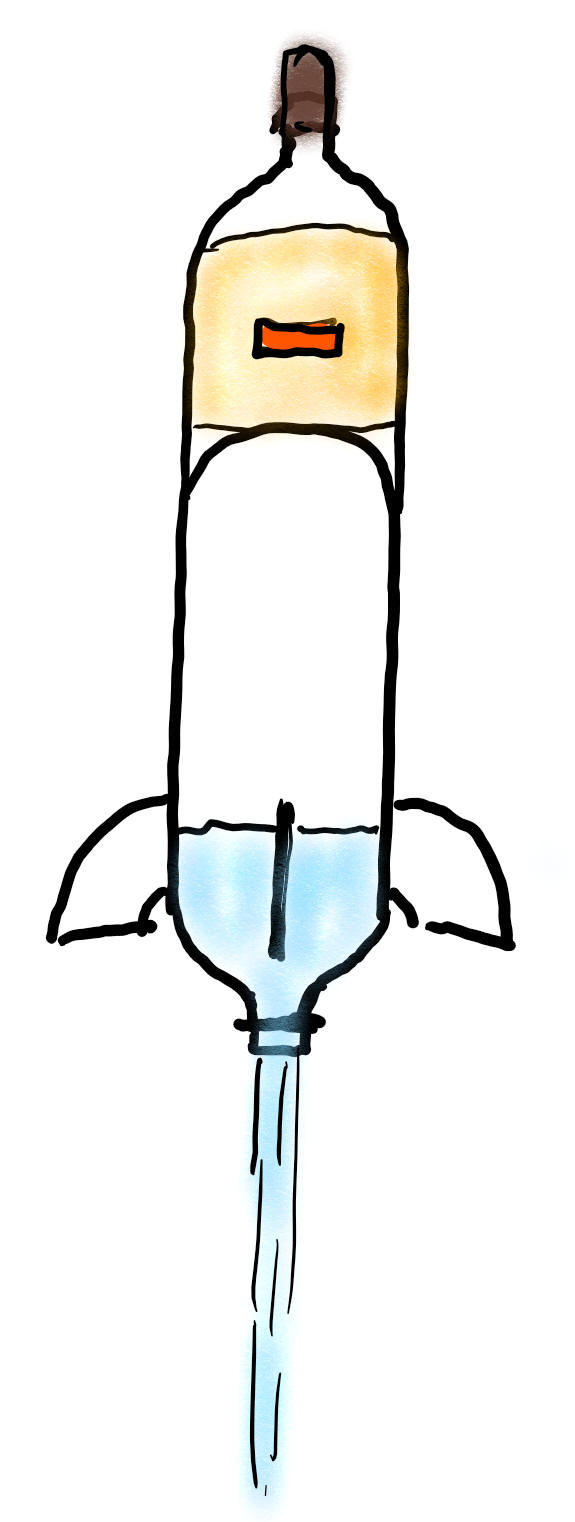 Class
23.5 Tuesday,
11/2/21
Class
23.5 Tuesday,
11/2/21Warm Up: [Video link for absent students]The diagram on the right shows a typical water rocket. Mass has been added to the tip of the rocket, and fins have been added to the back (bottom). There is a requisite 10cm long section dedicated to holding foam for protecting the probe.
1. What makes the rocket move upward?
2. Why do fins need to be added to the back of the rocket? How does this work?
3. Why does mass needed to be added to the front of the rocket? How does this work?
4. Aside from stability, what other reason is there for adding mass to the rocket?
Today:
- Check/review homework -- I forgot to do this in 7/8!
- Discuss important rocket design characteristics. Rocket Guidelines/restrictions
-
Brief rocket planning -- if you want to bring extra materials,
assign responsibility
- Clifford Heath's Water rocket simulator -- seems to underestimate the performance of heavier rockets, but seems to be a good indicator of the best water volume to use.
Homework:
-
On your own, it would be a good idea to review the packet for next Thursday's test.
 Class
23 Monday,
11/1/21
Class
23 Monday,
11/1/21Warm Up:
Starting from rest, a car in the real world (which includes air) accelerates to its maximum speed, maintains that speed for a few seconds, and then brakes as rapidly as possible. Draw a series of four force diagrams to show how the net force and the individual forces acting on the car change over time. Use labeled arrows to show all of the forces (and the net force) acting on the car during each of these time periods. Draw a diagram for...
1. The car at rest
2. The car undergoing initial acceleration
3. The car at maximum velocity
4. The car braking
Today:
- Check/review homework
- Work Time -- spreadsheet, then practice test
Homework:
-
Complete the rest (p. 26-27) of the practice test in the Unit 3 Packet answers
-
Finish and submit your spreadsheet and use it to solve this problem...
-
A water rocket has a cross-sectional area of 0.01m and a mass of 0.15kg. After flying directly upward to a height of 80m, the rocket falls directly downward for exactly 5 seconds before hitting the ground. If the density of the air in the launch area is 1.22kg/m^3...
-
What is the rocket's drag coefficient?
-
What is the rocket's speed when it hits the ground?
-
-

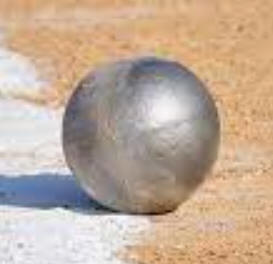
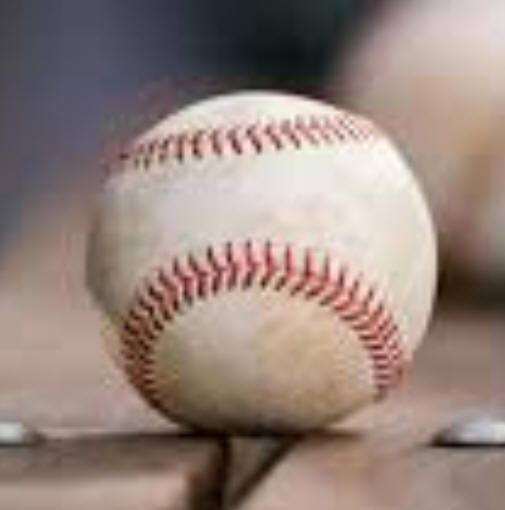 Class
22.5 Friday,
10/29/21
Class
22.5 Friday,
10/29/21Warm Up:
1. Which can you throw with more force, a Wiffle Ball® (0.045kg), a baseball (0.145kg), or a shot put (5.45kg)? Or is there no difference? Explain your thinking. Some calculations -- don't peek before thinking.
2. What limits the amount of force that you can apply when you throw an object?
Interesting Link: article about the fastest pitch ever thrown
Today:
- Check/review homework
- Work Time -- Trajectory with Drag Spreadsheet or homework
- Deadline change -- spreadsheet is due at midnight on Monday.
Homework:
-
Complete page 25 of the practice test in the Unit 3 Packet answers
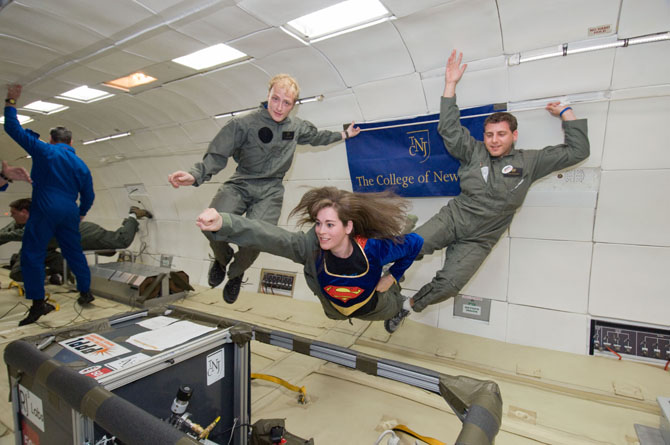 Class
22 Thursday,
10/28/21
Class
22 Thursday,
10/28/21Warm Up:
1. How does NASA simulate weightlessness?
2. You are trying to transfer some drippy sauce across a dinner table using only a drippy spoon. The sauce needs to go from the pot to your plate without dripping. Touching only the spoon, how can you make this happen?
3. What would happen if you were standing on a bathroom scale in a motionless elevator, and then the elevator suddenly began to accelerate downward at 1g?
4. What is the source of the "butterflies in the stomach" when we fall?
Today:
- Check/review homework
- Project Overview
- Design an air pressure-powered water rocket that will fly as high as possible while safely carrying an electronic air pressure probe. The flight must be controlled (cross-sectional area should be constant) and vertical.
- Fine-tune a method to collect data that will allow you to do
the following:
- Create a graph of height vs time
- Calculate the average force of water thrust
- Use your data and a mathematical model (spreadsheet -- here's my example -- not shared) to determine your rocket's drag coefficient.
- Calculate (with reasonable accuracy) the number of bottles (similar to your rocket's fuselage) that would be required to launch your body to a height of 10m. Also calculate the acceleration you would experience.
- This will be a group project, but parts will be completed individually.
- Begin work on the mathematical model. You will be using
this for more than just the project, so you must complete your own,
individually.
- Make a copy of this template -- Trajectory With Drag Spreadsheet Template
- Follow these directions...


- As you proceed, verify your formulas with these "Solutions"
-- which assume that you leave the originally-provided values in
the yellow cells

Homework:
-
Complete page 24 of the practice test in the Unit 3 Packet answers
 Class
21.5 Wednesday,
10/27/21
Class
21.5 Wednesday,
10/27/21Warm Up:
How fast does chalk fall? My spreadsheet answer
Today:
- Check/review homework
Homework:
-
Complete pages 22-23 of the practice test in the Unit 3 Packet answers
 Class
21 Tuesday,
10/26/21
Class
21 Tuesday,
10/26/21Warm Up:
A parachuter steps out of a plane. The total mass of the parachuter and gear is 100kg. After falling for a while, the parachuter reaches a terminal velocity of -55m/s. A short time later, the parachuter pulls the chute cord and reaches a new terminal velocity of -3m/s. From that point in time, the parachuter continues to drift to the ground.
Today:
- Check/review homework
- Finish the notes -- graph on packet page 14
- Work Time -- see assignment below
Homework:
-
Unit 3 Packet Problems #1-7 on p. 19-21 Solutions
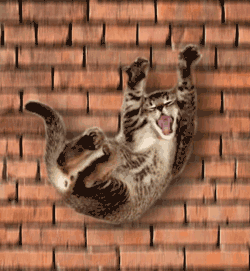 Class
20.5 Monday,
10/25/21
Class
20.5 Monday,
10/25/21Warm Up:
According to this article, emergency clinic records of 132 cats that jumped from windows of buildings showed a 90% survival rate. The average drop was 5.5 floors.
1. What's going on?
2. What's the rule for deciding whether to use "less" or "fewer?" Which applies here?
3. When does a falling cat experience zero net force?
4. When is a falling cat a "free-falling" cat?
5. When does a falling cat experience maximum net force?
Today:
- Check/review homework
- Wikipedia link to drag coefficient
- Notes: Drag and Terminal Velocity pdf version Filled-in notes and solutions 2021 Notes Video -- Start at 15:48.
Homework:
-
Packet p. 16 -- "Conceptual Practice With Drag"
 Class
20 Friday,
10/22/21
Class
20 Friday,
10/22/21Warm Up:
1. Explain how a nordic skier can ski forward on level ground with parallel skis (classic style) and without using poles.
2. Can this be done with downhill skis? Explain.
Today:
- Return retakes
- Check/review homework
-
Multibody drill A stuff -- do the practice problem on packet p. 11 (Unit 3 Packet).
-
Old solutions -- missing some tensions Multibody Drill A Solutions -- Stapleton
-
New last night -- Video of Solutions
-
Homework:
-
Multibody Drill A, problems 1-6, on packet pages 11-12.
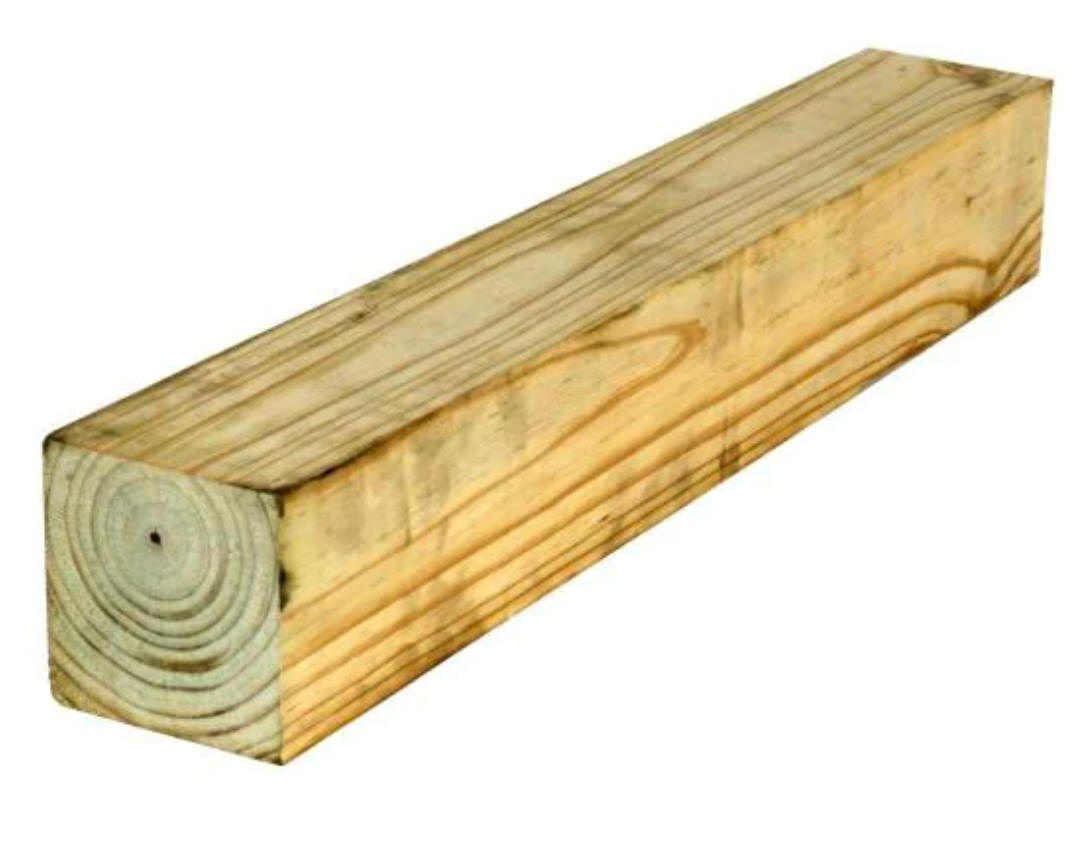

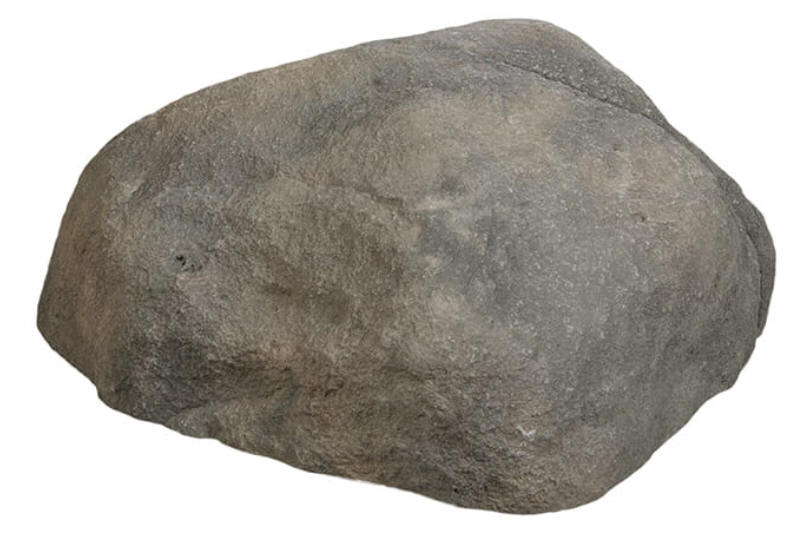 Class
19.5 Thursday,
10/21/21
Class
19.5 Thursday,
10/21/21Warm Up: I have a length of treated 4"x4" lumber, some large nails, a hammer, and a large rock. How will it feel if I put the rock on my head and then have someone pound nails into the wood on top of the rock?
Today:
- Check/review homework
- Notes on tension, introduction to multibody problems?
- Notes: Tension and Systems pdf version Filled-in notes Class video from last year -- notes start around 18:50 and at about 35:00, the video reaches the place where we will stop today.
-
For next class: Multibody drill A stuff
-
Old solutions -- missing some tensions Multibody Drill A Solutions -- Stapleton
-
New last night -- Video of Solutions
-
Homework:
-
On page 10 of the packet, finish writing net force equations for at least two more possible systems. We will have already finished a few.
Warm Up: None -- retake day
Today:
- Test retakes, work time
Homework: (continued from yesterday)
- Problems 1-7 of "Newton's Laws...Problems" on Page 17 of the Unit 3 Packet solutions
- Questions 1 and 2 of "More Newton's Laws... Practice" on Page 18 of the Unit 3 Packet Solutions
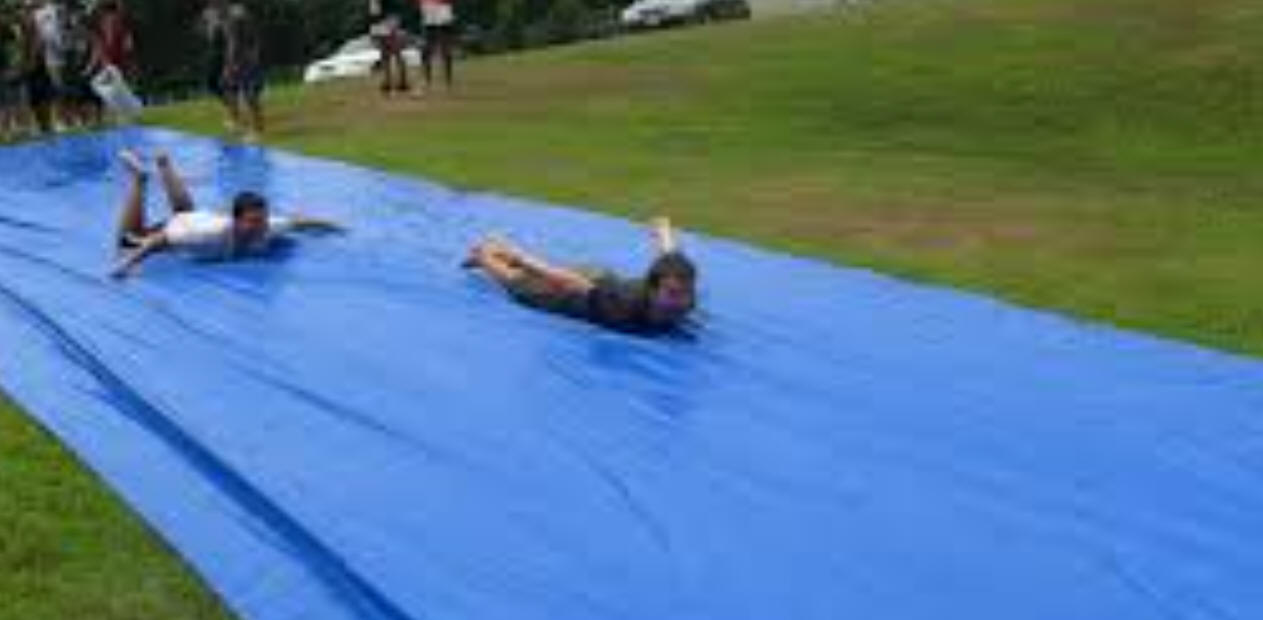 Class
18.5 Tuesday,
10/19/21
Class
18.5 Tuesday,
10/19/21Warm Up: On level ground, Tim begins sliding with a velocity of 6m/s. If Tim's slide lasts for 2 seconds, what is the coefficient of kinetic friction between Tim and the slide?
Today:
- Check/review homework
- Work time -- not enough time today for a proper introdu ction to "multibody" problems.
- The optional retake will be next wednesday
Coming up:
- Tomorrow -- multibody systems? Notes: Tension and Systems pdf version Filled-in notes
- Wednesday -- test retake and practice problems
Homework: Due on Thursday!
- Problems 1-7 of "Newton's Laws...Problems" on Page 17 of the Unit 3 Packet solutions
- Questions 1 and 2 of "More Newton's Laws... Practice" on Page 18 of the Unit 3 Packet Solutions
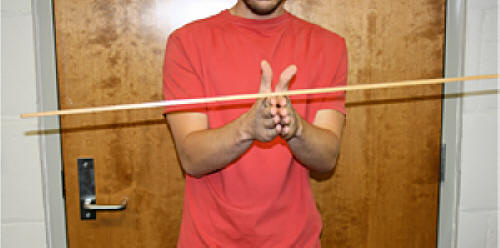 Class
18 Monday,
10/18/21
Class
18 Monday,
10/18/21Warm Up: One way to find the center of mass (a.k.a. balance point) of a stick is to support it with two hands and then slowly move those two hands together until they meet under the stick's center of mass. Why does this method work?
Today:
- Classroom culture check-in survey
- Check/review homework
- Notes: Friction (Packet page 8) Filled-in version
- The optional retake will be next wednesday
- Work time -- homework or re-do shot one of the launcher project. It will be a horizontal launch at some height. No obstacle.
Coming up:
- Tomorrow -- multibody systems? Notes: Tension and Systems pdf version Filled-in notes
- Wednesday -- test retake and practice problems
Homework:
- Problems #10-14 on page 6 of the Unit 3 Packet Answers and Solutions
- Optional -- Prepare for the retake next Wednesday
 Class
17.5 Friday,
10/15/21
Class
17.5 Friday,
10/15/21Warm Up: Why can't you literally "pull yourself up by your own bootstraps?" This question has also been stated as "why can't you pick yourself up?"
Today:
- Return Launcher Contest Problems
- Check/review homework
- Notes: Newton's 3rd Law (Packet page 7) Filled-in notes video of notes
- The optional retake will be next wednesday
Homework:
- Conceptual #3-4 and Problems #8-9 on pages 4-5 of the Unit 3 Packet Answers and Solutions
- Optional -- Prepare for the retake next Wednesday
 Class
17 Thursday,
10/14/21
Class
17 Thursday,
10/14/21Warm Up: It is possible to remove a sheet paper from under a dry erase pen without touching or tipping the pen. How can one do this without tipping the pen? Why does the pen usually fall?
Today:
- I failed to record some assignments (B5/6 -- launcher problem practice; B7/8 -- launcher problem practice, Pennington Ptest, Ptest #2 p. 17) . Who did/didn't do them? (enter grades)
- Don't forget to turn in your group's project spreadsheet!
-
Contest grading of shot #1

- Get Unit 3 Packet (Newton's Laws in 1-D) PDF
- The optional retake will be next wednesday
Begin New Unit: Notes: Newton's 1st and 2nd Laws pdf version Filled-In Notes Video of notes from last year (start at about 9:30 -- about 30 minutes long)
Do another practice problem (or two?) together
Work time
Homework:
- Conceptual #1-2 and Problems #1-6 on pages 4-5 of the Unit 3 Packet This solution link doesn't seem to be working, so I put the solutions in Google Classroom. Answers and Solutions
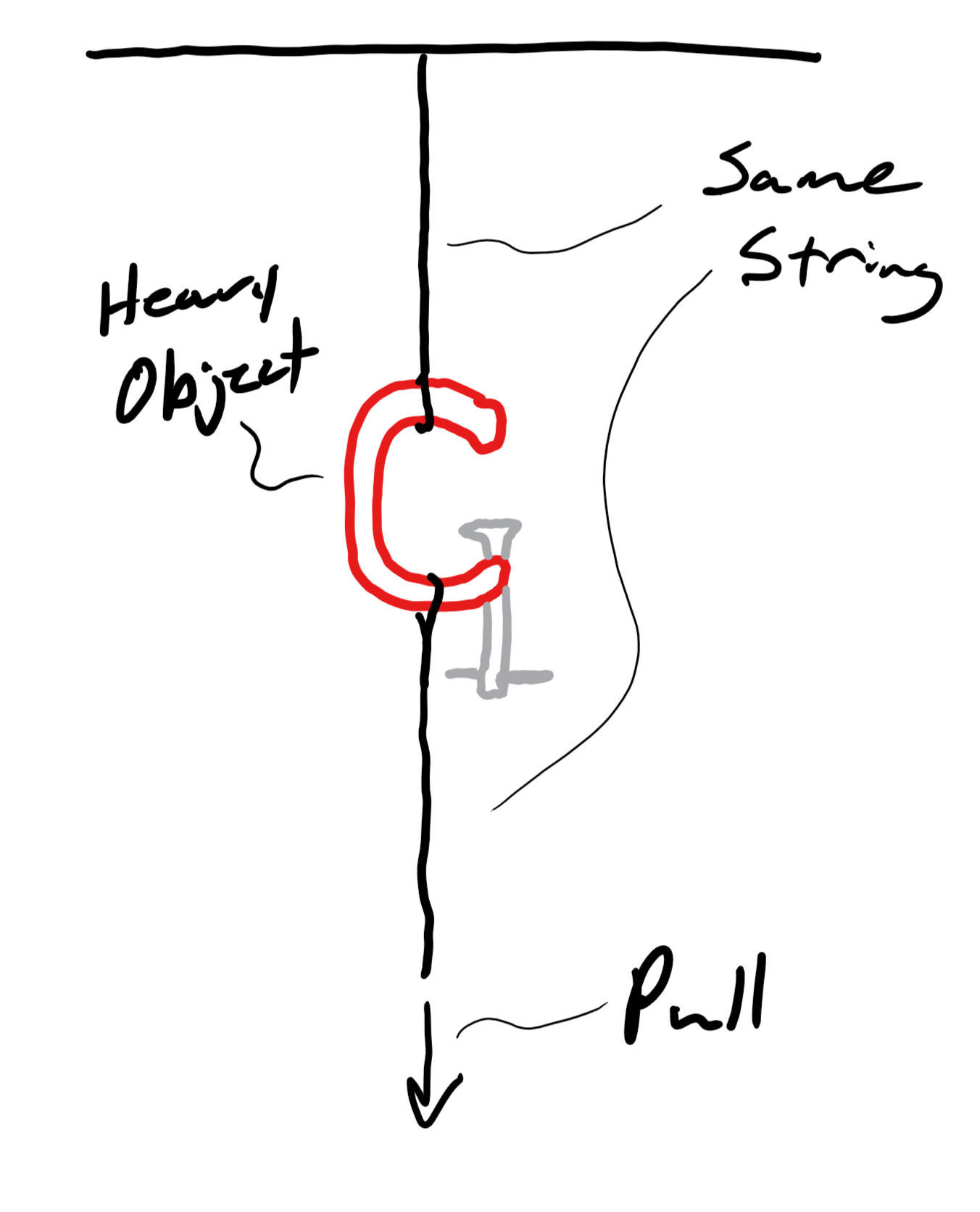 Class
16.5 Wednesday,
10/13/21
Class
16.5 Wednesday,
10/13/21Warm Up: There is a heavy object suspended from the ceiling by a string. Another segment of the same string is hanging downward from the object. I am going to pull on the bottom string until one of the two strings breaks. Which string is going to break first? Why?
Today:
- I failed to record some assignments that were due around 9/27 and 9/28. Who did/didn't do them? (enter grades)
- Contest Results
- Did anyone discover any test grading mistakes?
- Get Unit 3 Packet (Newton's Laws in 1-D)
- The optional retake will be next wednesday. Does anyone have questions?
Homework:
- None -- if you're planning to retake the test, use tonight to prepare.
Warm Up: Get your launchers ready. No practice shots! Make a plan. Once we get going, we need to achieve less than one minute per shot. The first shooters can have a little extra time.
Today:
- Hand in your contest problem solutions. Make sure that all of your names are on the sheet.
- Projectile Launcher Contest
- Return tests. Be aware that a few students have not finished the test.
- Test score distribution

Homework:
- Look over your test and see if you think there were any grading errors. If you want clarification on a question or problem, watch the corresponding video provided in Google Classroom. If you think there may be a grading mistake, tell me tomorrow.
Warm Up: None
Today:
- Test, part 2 -- Projectile Problems
- Work on the contest problems -- due next Tuesday, at the beginning of class.
Homework:
- Solve the contest problems. Make a plan for setting up your shots.
Warm Up: None
Today:
- Test, part 1-- Conceptual Questions and River Problems
- Hand out the contest problems.
Homework:
- Contest problems are due next Tuesday
 Class
14.5 Tuesday,
10/5/21
Class
14.5 Tuesday,
10/5/21
Warm Up:
A boat is following a heading of 56 degrees N of E, and its
speed in still water is 1.3 m/s. Find the velocity of the river's
current if the boat's actual velocity (relative to the Earth) is 3.2m/s
in a direction 17 degrees W of N.
Solution...
 Video explanation
Video explanation
Today:
- Test review.
- Link to a couple more river problems
- No projectile launcher shooting practice after today.
- Hand out contest problems -- work on them with your group.
Homework:
- Study
- Contest problems are due next Tuesday. Turn in one team copy at the beginning of class and keep the other copy for your own use.
 Class
14 Monday,
10/4/21
Class
14 Monday,
10/4/21Warm Up: Final launcher considerations...
1. How are you going to aim your launcher in the horizontal plane?
2. How are you going to aim your launcher in the vertical plane?
3. How are you going to decide on your projectile's initial height? [Remember that you will be given a vertical "launch window," and it is up to you to determine the exact launch height.]
4. How are you going to hold your launcher steady, at the height and angle of your choice?
5. What are you going to do if you take a test shot and it turns out that your distance is off by a large amount?
Today:
- What's on the Chapter 3 Test
- Trajectory contest practice
Homework:
- Test on Wednesday and Thursday
- Do you have questions about anything on the test? Add your question or request to this Google Doc (as early as you can -- I may not get to late submissions). I will either create a video answering your question, or I will answer it tomorrow during class.
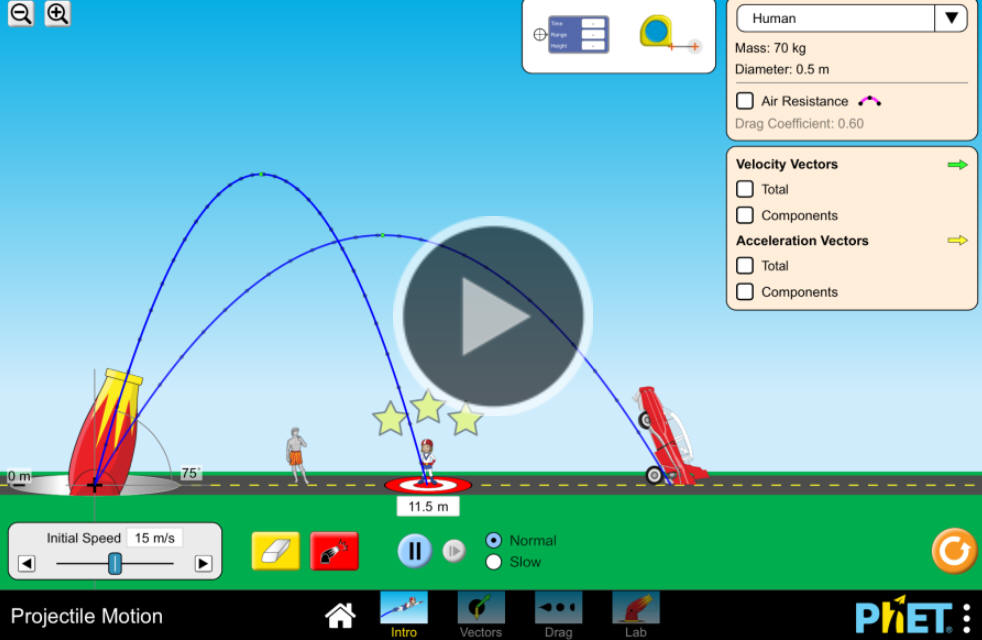 Class
13.5 Friday,
10/1/21
Class
13.5 Friday,
10/1/21Warm Up: Let's try out the PhET Projectile Motion Simulation and see what it has to offer.
The riverboat simulator is also interesting, but I would change the wording a bit. Can you guess what I would change?
- Check/review homework.
- Final launcher practice -- set up some test shots
- Hand out the contest problems
Other Stuff
- The test next Wednesday will include one non-orthogonal river problem. If you want more practice with this type of problem, try the warm-up problems from last year's classes 20 and 21. Solution links are listed after the warm-ups
- What's on the Chapter 3 Test
Homework:
- Study
 Class
13 Thursday,
9/30/21
Class
13 Thursday,
9/30/21Warm Up: What's the best way to create a graph like this one? Exactly what do you need to do?
Today:
- Check/review homework
- Read over some of the details in the 2nd launcher handout.
- Launcher calibration and practice
Homework:
- Page 17 of Practice test #2 (Unit 2 Packet, page 16-17) is due tomorrow. Solutions Conceptual Questions Video Ch3 PTest Probs 1-2 Video Ch3 PTest Probs 3-4 Video
 Class
12.5 Wednesday,
9/29/21
Class
12.5 Wednesday,
9/29/21Warm Up: I like to start projectile problems by listing important variables in the X and Y dimensions (x and y components of motion). It might also be helpful to list some resultant variables. Let's try.
Today:
- Questions about Mr. P's test problems??
- Continue launcher calibration and practice.
- We have hot glue, if you want to keep your trigger from slipping.
- Video showing how to fix a graph when the obstacles aren't showing up right
Homework:
- Page 16 of Practice test #2 (Unit 2 Packet, page 16-17) is due Tomorrow. Solutions Conceptual Questions Video Ch3 PTest Probs 1-2 Video Ch3 PTest Probs 3-4 Video
 Class
12 Tuesday,
9/28/21
Class
12 Tuesday,
9/28/21Warm Up:
1. Based on the diagram to the right, provide definitions for precision and accuracy. Which is easier to fix?
2. Can you suggest some ways to improve precision? Accuracy?
3. What are some probable sources of error in your attempts to hit the target?
Today:
- Group size limit change -- groups of 3 are now okay. You can re-shuffle groups today. If you want to "make a copy" of your spreadsheet and use that to create a new spreadsheet for your new group, that's okay. However, if you were one of the group's who had a member who solved the bonus problem, we will need to discuss what makes sense in that case.
- Get Trajectory Contest Project Handout #2 PDF Version
- Launcher assembly, modification, data collection, and calibration graph creation.
- Launcher Parts:

 What to save in your Ziplock bag...
What to save in your Ziplock bag...
- If your spreadsheet calculators don't work right now, record your calibration data anyway. Then fix your spreadsheet and figure out the intitial velocities later.
- Store your plunger/bands, projectile, and trigger/string in a Ziplock bag with your names and block on it.
Homework:
- Make your calibration graph. Create a copy on its "own sheet" for greater precision.
- Practice test #2 (Unit 2 Packet, page 16-17) is due on Friday. Solutions Conceptual Questions Video Ch3 PTest Probs 1-2 Video Ch3 PTest Probs 3-4 Video
- The test next Monday will include one non-orthogonal river problem. If you want more practice with this type of problem, try the warm-up problems from last year's classes 20 and 21. Solution links are listed after the warm-ups.
 Class
11.5 Monday,
9/27/21
Class
11.5 Monday,
9/27/21Warm Up:
The diagram on the right shows the trajectory of a free-falling projectile that was launched horizontally. Sketch the diagram. Show/label the projectile's overall velocity (v), x velocity (vx), and y velocity (vy) at the start of its flight and at some other point in the flight.
Today:
- Return retakes -- Reflect on 1st Unit, now that you've been through a full unit cycle.
- Check/Review Homeworks
- Projectile trajectory answers
- Pennington practice test
Homework: Finish any homework that you didn't complete for last class (including the projectile launcher practice problems -- p. 15; and Mr. Pennington's practice test -- p. 10-15)
Warm Up:
None -- test retake day
Today:
- Retake
- Work time -- Project stuff or Mr. Pennington's old Chapter 3 Test (page 10-14 of the Unit 2 Packet) Solutions
Homework:
- Mr. Pennington's old Chapter 3 Test (page 10-14 of the Unit 2 Packet) Solutions Video -- problems 1-3 Video -- problems 4-6
- For the rest, see class 10.5, below. It's all due on Monday.
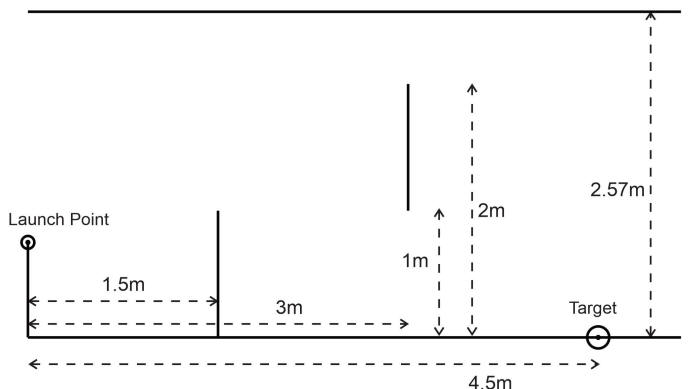 Class
10.5 Thursday,
9/23/21
Class
10.5 Thursday,
9/23/21Warm Up:
Find a combination of initial angle and initial speed that will carry a projectile from the launch point to the target (assuming no air resistance).
You can guess, and I will check, with my private spreadsheet. :-)
Today:
- Clarify the homework assignments.
- Work time. Complete your spreadsheet and then use Sheet 1 to complete the projectile practice problems on p. 15 of the packet.
- Test retake tomorrow. If you're not retaking the test, you can work on Mr. Pennington's old test (p. 10-14)
Homework:
- Use Sheet 1 of your spreadsheet (or a copy of it) to complete the Projectile Launcher Spreadsheet Practice Problems on p. 15 of the Unit 2 Packet.
-
Sheets 1 and 2 of your group's trajectory spreadsheet are due by
Monday. At least one of you should submit the spreadsheet in
Google Classroom.
- Sheet 1 should look like this.
 Here is the
video I
made in class, showing how to set up the spreadsheet.
Here is the
video I
made in class, showing how to set up the spreadsheet. -
Sheet 2 should look like this
 ,
except that you are not require to have the launcher calibration
graph at this point.
,
except that you are not require to have the launcher calibration
graph at this point.
- Sheet 1 should look like this.
 Class
10 Wednesday,
9/22/21
Class
10 Wednesday,
9/22/21Warm Up:
1. Based on the existing pattern, what should number should appear in the 7th row of column C?
2. If we wanted to continue that pattern quickly and easily, how could we set up a spreadsheet to do it?
Today:
- Please answer this brief multiple choice question (for our Wednesday afternoon teacher meeting). Thanks!
- Check/review homework
- Trajectory Project:
- Get Trajectory Contest Project Handout #1 PDF Version
- Find a partner.
- Modify this spreadsheet template to create the Sheet 1 ("Trajectory") of your Trajectory Project spreadsheet.
- As you build your spreadsheet, use this screenshot to check
your work.
 Keep the yellow cells the same as mine so that you can use my
calculations to verify yours. .
I plan to make a video during class and then make the video
available on my YouTube channel.
Keep the yellow cells the same as mine so that you can use my
calculations to verify yours. .
I plan to make a video during class and then make the video
available on my YouTube channel. - FYI, here are what Sheets 2 and 3 will look like...
Homework:
- Divide tasks and work on the project at home. Before class on Monday, you should be finished with Sheet 1, as well as the initial velocity calculators on Sheet 2. Hopefully, you will calibrate your launcher on Monday (split block) and Tuesday.
- Test retake on Friday.
 Class
9.5 Tuesday,
9/21/21
Class
9.5 Tuesday,
9/21/21Warm Up: Sketch a head-to-tail diagram for each of the following. We will look at the graphical solutions afterward.
1. A baggage conveyor is moving in a direction 25 degrees South of East at a rate of 1.5m/s. A bug riding on the conveyor has a velocity of 2m/s in a direction 30 degrees East of South. What is the bug's heading and "speed on a still conveyor?"
2. A river's 3mph current flows in a direction 15
degrees West of North. A swimmer, whose speed in s till
water is 2m/s, swims across the river with a heading 35 degrees South of
West. What is the swimmer's velocity, relative to the Earth?
till
water is 2m/s, swims across the river with a heading 35 degrees South of
West. What is the swimmer's velocity, relative to the Earth?
3. A superhero steward on an airplane is traveling in a direction 10 degrees East of South, and their speed is 580mph. The plane's velocity is 460mph in a direction 5 degrees West of South. What is the steward's heading and their "speed on a still plane?"
Sketches and answers: ---Argh!! #1 is wrong! But 2 and 3 are right.
Today:
- Update seating chart in A8
- For even more non-orthogonal river problem practice, see the warm-ups from last year's classes #20 and #21. A link to a video solution is included after each warm-up.
- Tpmorrow: Modify
this spreadsheet template to create a mathematical model of a
projectile's trajectory. Make your own copy of the template.
Then use formulas to create the spreadsheet.
 .
I plan to make a video during class and then make the video
available on my YouTube channel.
.
I plan to make a video during class and then make the video
available on my YouTube channel. - Check/review homework.
Homework:
- Projectile Practice Problem #3 on p. 9 of the Unit 2 Packet. Solutions
- Don't forget that your chance to retake the test is on Friday.
 Class
9 Monday,
9/19/21
Class
9 Monday,
9/19/21Warm Up: Suppose you shoot a projectile, horizontally, from the edge of a school tabletop that is 0.95m above the floor. If the projectile hits the floor at a distance of 14 floor tiles from the table...
a. What is the projectile's v0?
b. How would you find the projectiles' final speed?
c. How would you find the angle at which the projectile hits the floor?
Today:
- Update seating chart
- Check/review homework
- Notes: Packet p. 6-7 Currents and Projectiles -- Notes and Practice Problems Filled-in notes and solutions Video of Notes from a past year's Class
Rest of the week (tentative plan):
- Tuesday -- create a trajectory spreadsheet
- Wednesday -- begin trajectory contest project
- Thursday -- continue project work
- Friday -- test retake opportunity; Mr. Pennington's Unit 2 practice test
Homework:
- Projectile Practice Problems 1,2, and 4 on -- p. 8-9 of Unit 2 Packet. Solutions
 Class
8.5 Friday,
9/17/21
Class
8.5 Friday,
9/17/21Warm Up:
1. What do "air speed" and "speed in still water" mean?
2. What is a "heading?"
3. Let's practice resolving non-orthogonal vectors into their x and y components.
Identify the component and resultant vectors for the following "river problems." Then sketch them using head-to-tail vector addition.
3. A boat travels eastward at a rate of 3m/s. The boat's heading is northeastward, and the boat's speed in still water is 8m/s. What is the velocity of the water in which the paddler is paddling?
4. A quadcopter has a velocity of 20m/s westward. The wind is blowing southward at a rate of 10m/s. What are the quadcopter's airspeed and heading?
5. The driver of a golf cart on an aircraft carrier uses a compass to head northward. The cart's speedometer reads 10mph. The aircraft carrier's heading is eastward, and its speed in still water is15mph. The ocean current is northwestward at a rate of 5mph. What is the actual velocity (relative to the Earth) of the golf cart?
Today:
- Check/review homework
- Example non-orthogonal river problem -- #4 on page 5 of Unit 2 Packet.
- Old video on Non-orthogonal River problems.
Homework:
- River Problems 5-6. These are non-orthogonal. Solutions
 Class
8 Thursday,
9/16/21
Class
8 Thursday,
9/16/21Warm Up:
An airplane flying horizontally with a ground speed of 120 m/s releases care packages from a height of 4,800 meters. If the packages are not affected by air resistance, how far ahead of the target (in the x dimension) should the packages be released?
Today:
- Return bonus problems
- Unit 2 Notes -- Pages 1-3 of the Unit 2 Packet
Filled-out version of the notes
- Trigonometry -- using trig functions (SohCahToa) and their inverse functions. Short video from last year.
- Intro to kinematics in 2 dimensions
- Orthogonal and non-orthogonal vector addition
- River problems
- Bob and Jane revisited
- Change to homework problem
- Helpful videos:
Homework:
- Complete the vector addition practice #3-6 on p. 3 of the Unit 2 Packet. Here are my solutions.
- River problems. On packet p. 5, change the current speed to 2.5m/s. Then answer #2 and 3 on page 5 of the packet. 2021-22 Solutions
Warm Up:
1. Suppose the two vectors on the right represent two forces acting on the clam. In what direction will the clam accelerate? How will that acceleration compare to the accelerations we would observe if each force were acting alone?
2. The diagram on the right shows a top view of a train car that is moving at a rate of 2m/s. You are in the car. In which direction and how fast should you walk in order to have the intended velocity shown on the right.
Today:
- Return tests. This year's grade distribution...
 2018-2019 grade distribution...
2018-2019 grade distribution...
- An interactive graphing spreadsheet, in case you want more practice relating position, velocity, and acceleration graphs.
- Unit 2 Vector Addition notes/practice: Pages 1-3 of the Unit 2 Packet
- Tomorrow: Complete the vector addition practice #3-6 on p. 3 of the Unit 2 Packet. Here are my solutions.
Homework:
- None
Warm Up: None
Today:
- Test
Homework:
- None
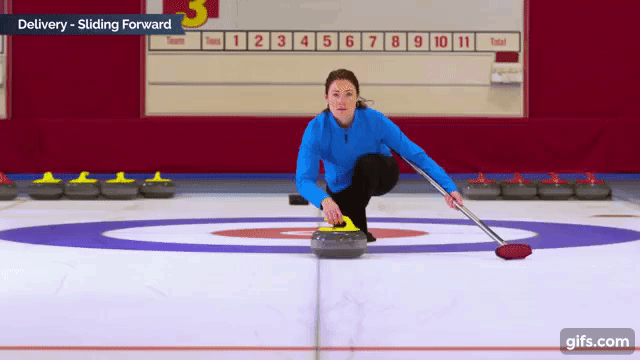 Class
6.5 Monday,
9/13/21
Class
6.5 Monday,
9/13/21Warm Up: How can we find the acceleration of an object as it slides across this floor, using only a stopwatch and the floor as measuring devices?
Today:
- Check/review homework.
- Interests of students in my two classes:

- Questions about the test? -- Did anyone notice any more mistakes?
- Here's a mostly nonsensical problem for the people who want to think about time travel...
 If you could travel in time, and
if you found
yourself in the infinite loop of acceleration changes shown below... would
you ever find yourself in the same location as another past self?
Explain by creating analagous graphs of velocity and distance vs time.
If you could travel in time, and
if you found
yourself in the infinite loop of acceleration changes shown below... would
you ever find yourself in the same location as another past self?
Explain by creating analagous graphs of velocity and distance vs time.
Homework:
- Study -- Hopefully you have been marking items in the
notes and homework that were tricky the first time. Go back
and quiz yourself over those items. They should no longer be
tricky. If they are, get help. Memorize the formulas if
you want an extra point.
 Kinematics
formulas Quizlet
Kinematics
formulas Quizlet
Warm Up:
1. Create a kinematics problems (on your own, or as a class). Start by listing the available formulas and/or variable.
2. If we graphed the motion of a vertically-launched projectile, which of these graphs would have at least one sharp corner in it?
a. velocity vs. time b. speed vs. time c. position vs. time d. acceleration vs. time
e. none of these f. all of these
Today:
- Check/review homework. Messy solution with no use of vector addition skills
- Sliding object problem?
- Begin Unit 2 -- Kinematics in 2 Dimensions
- Get the Unit 2 Packet ("river problems" and projectile motion)
More Kinematics Practice (optional!)
-
New questions and problems, based on form feedback...
- Extra Unit 1 Test Practice -- Questions and problems
- Extra Unit 1 Test Practice -- Answer Key The answer to #5 on the first section was wrong. It should be correct now (if it's highlighted in yellow). Solution to Extended Kinematics Problem
-
Optional -- Here is some more
practice creating graphs for events
- Blank PDF Handout -- "Extra Graphing Practice"
- Solutions(**On my graph of position vs time for the soccer ball kick, my graph should really have started and ended at the same position.)
- Video of me working through these and creating solutions
- Optional -- More practice with simple (one formula required) kinematics problems. Make your own copy and expand column D to see the answers.
Homework:
- "Classic River Problem" on page 4 of the Unit 2 Packet.
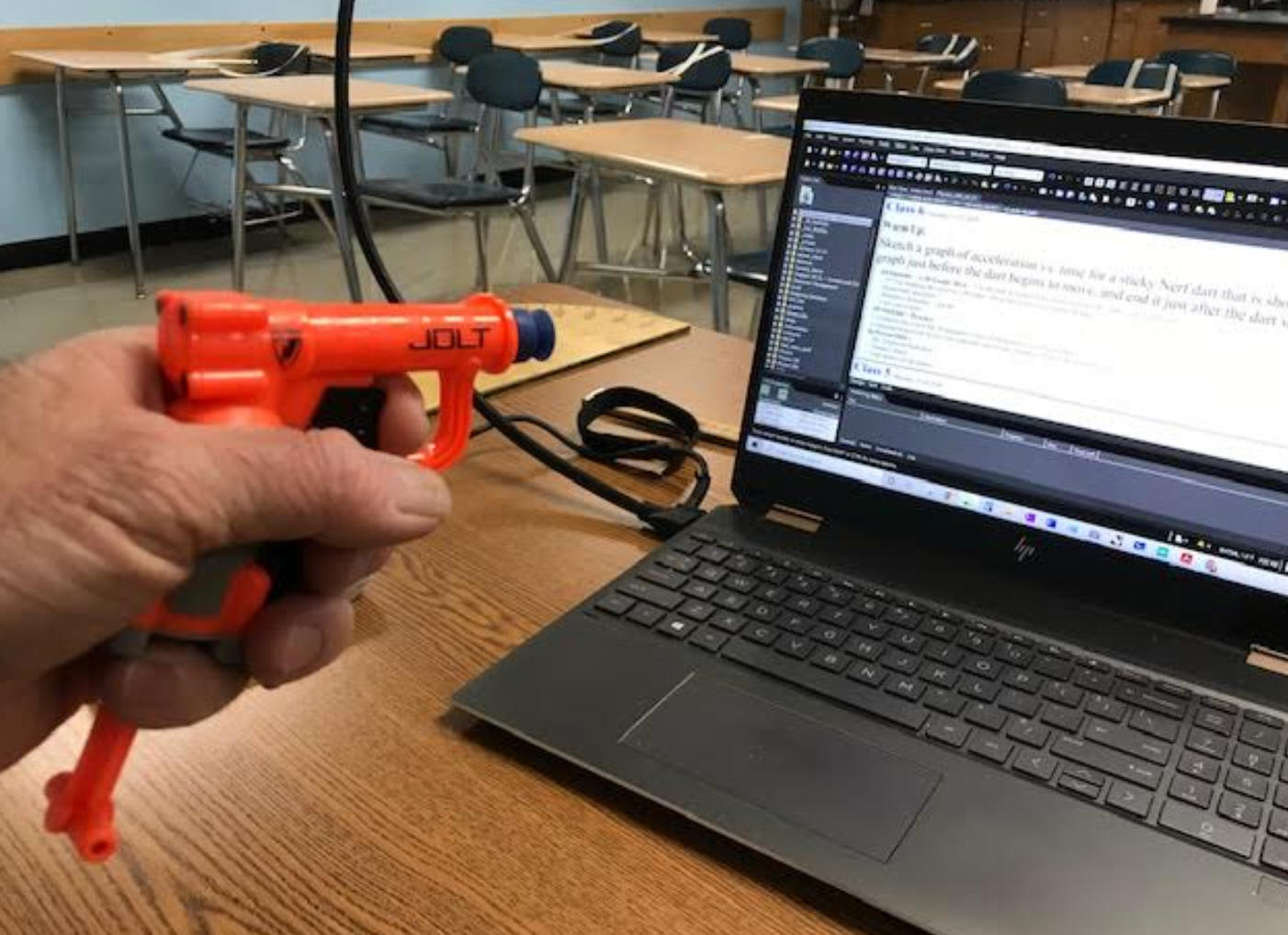 Class
5.5 Thursday,
9/9/21
Class
5.5 Thursday,
9/9/21Warm Up:
Sketch a graph of acceleration vs. time for a suction cup Nerf dart that is shot at a wall. Start your graph just before the dart begins to move, and end it just after the dart stops.
Today:
- Check/review homework. Improving our troubleshooting efficiency.
- Pinpoint weaknesses.
- Test on Tuesday: 42 points total
- Fill out this form if you want to request extra practice.
Homework:
- #57 and #60 from "More Kinematics Problems". These are longer than regular problems and shorter than "extended problems." Do the others if you want more practice. Solutions
- Optional -- Kinematics formulas Quizlet
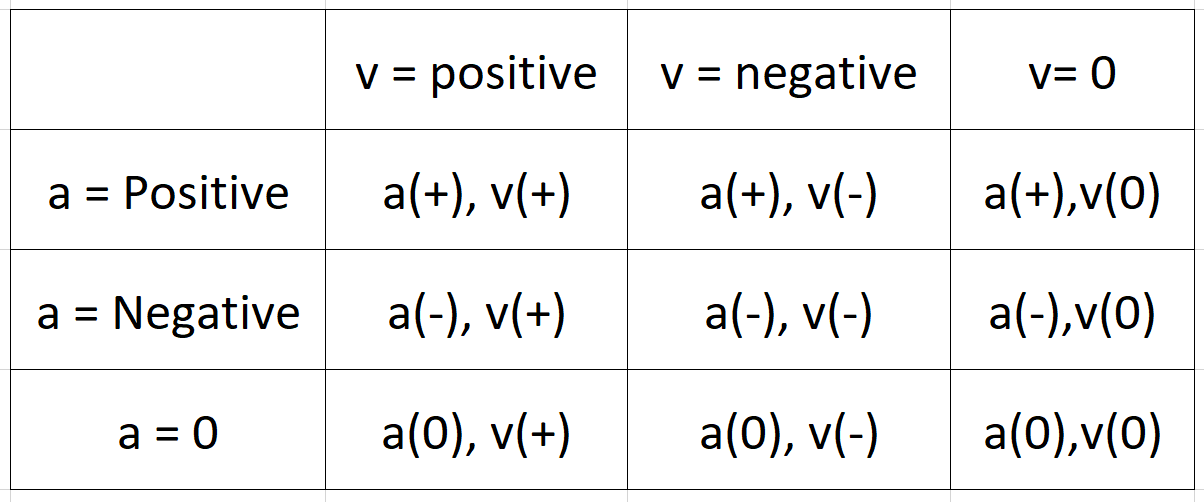 Class
5 Wednesday,
9/8/21
Class
5 Wednesday,
9/8/21Warm Up:
Mr. Chase pointed out that there are 9 types of motion. This is based on the fact that Velocity can be +, -, or 0, and acceleration can also be +, -, or 0. A pendulum swinging back and forth demonstrates 8 out of these 9 types of motion.
1. Graph the pendulum's X velocity over one full period (over and back) of motion.
2. Identify where in the video each of those 8 types of motion occurs.
3. Which of these 9 types of motion is not demonstrated?
Today:
- Fruit snacks for Luke and Ian ( Sorry, I forgot yesterday.)
- Updated Spool Tractor results
- Check/review homework
- Answer this multiple choice question for our early release PLC data -- if you haven't already.
- Test next Tuesday. Use this practice test to pinpoint your
weaknesses. Don't discuss the problem or look up the answer
until after you've finished it.
1-D
Kinematics Practice Test #2
- Solutions except for conceptual #5 and problem #5 solutions to #5 and #5
- Video Help part 1 (it's unfortunately sideways, but it's short)
- Video Help part 2 (starts with #4, I think)
- Who needs to finish the spool tractor activity?
Homework:
- Finish the practice test -- p. 23-27 of the Unit 1 Packet.
Warm Up: Simplify this "extended" kinematics problem by drawing a diagram and identifying intervals with unique accelerations and or unique initial/final conditions. You don't have to solve the problem.
A ball is dropped (in free-fall) from a height of 16m. When it reaches a speed of 3m/s, the ball contacts a compression spring. The ball continues downward, slowing down as it compresses the spring and then speeding up as it is thrown back upward by the spring. For purposes of calculation, you can consider the ball to experience a constant +35m/s2 acceleration during its 0.15 seconds of contact with the spring.
1. What is the height of the ball when the spring is fully compressed?
2. What is the maximum height of the ball after it leaves the spring?
Today:
- In case you missed today's class, here is last year's introduction to extended kinematics problems. Start watching at about 11:40.
- Work on Extended Kinematics Problems Answer Key Video Explanation
- Some people -- finish the spool tractor activity
- Spool Tractor Results: 5-way tie for 1st place -- Luke & Ian; Eli & Charlie; Lily L., Emmy, & Alexis. Fastest Car -- Andrew & Braden (3.75m/s); Ximena & Maddy, David& Angus, New Fastest Tractor -- 4.07m/s (Darrian and Ben Hood)
Homework:
- Packet P. 21-22 Extended Kinematics Problems Answer Key Video Explanation
Warm Up:
1. Suppose students enter our school at a rate of 54 pounds/sec (pounds of student). After they enter, they lie down, head-to-toe, forming a line whose length is the sum of their heights. Since an average 16 year old student's weight:height ratio is about 2.07 lb/in (and assuming these are all average students with that ratio), how many days will it take them to form a line 3 miles long?
2. This problem is fine for dimensional analysis practice, but it's not actually solvable given the information provided. Explain.
Today:
- Warm-up -- discuss how dimensional analysis works.
- Check/review homework
- Spool tractor challenge -- accuracy and speed
Homework:
- None
- Optional, if you want to brush up on your dimensional analysis skills -- Unit Conversions Practice
 Class
3.5 Thursday,
9/2/21
Class
3.5 Thursday,
9/2/21Warm Up:
Consider the case of this ball. At t = 0s, the ball is free-falling directly upward at a height o 10m, with a speed of 20m/s. Sketch graphs of the ball's position, velocity, and acceleration (vs. time) over the next 4 seconds. [For simplicity, use g =10m/s2 instead of g = 9.8m/s2]
Today:
- Check/review homework
- Spool tractor practice
Homework:
- Complete the problems section of Mr. Pennington's Old 1-D Kinematics Test (Packet page 20). **Note that problem 1 is a unit conversion problem, which we haven't been over in class (though you should be well-versed in unit conversions from Chemistry). You will have a chance to practice unit conversions if you want more practice. And in problem #2 you'll need to know that circumference = pi*d. Here's the Answer Key. If you have questions, watch this Video for Help with the Problems
 Class
3 Wednesday,
9/1/21
Class
3 Wednesday,
9/1/21Warm Up:
1. For letter a, on the right describe what an object could be doing in order to have both positive velocity and positive acceleration.
2. Do the same for the rest of the letters.
Today:
- Check/review homework
- Notes: Free-fall and areas under curves (packet p 15-16) pdf Filled-In Version Video from class last year -- start around 20:30
- Spool tractor work time
Homework:
- Complete the rest of the multiple choice on Mr. Pennington's Old 1-D Kinematics Test (Packet pages 18-20). Answer Key. If you have questions, watch this Video for Help
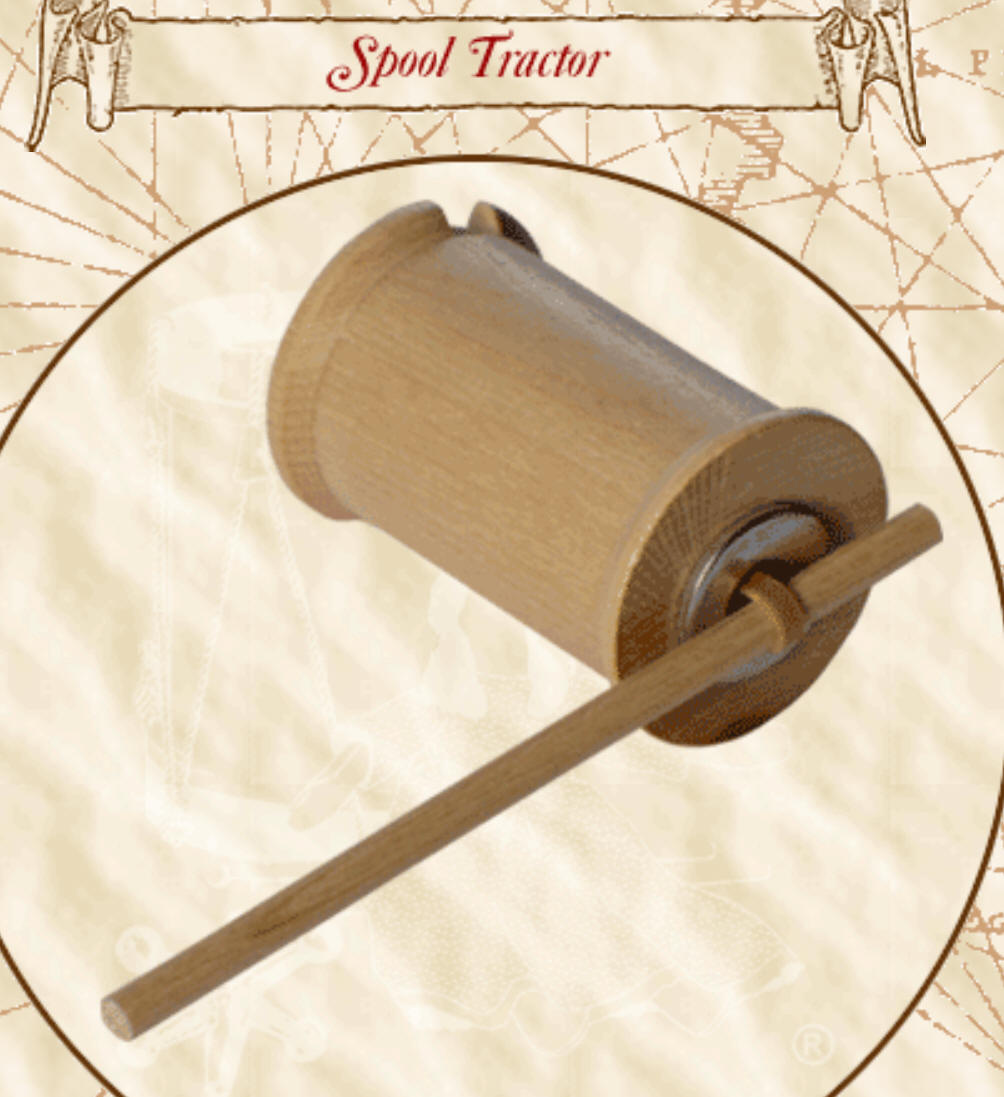 Class
2.5 Tuesday,
8/31/21
Class
2.5 Tuesday,
8/31/21Warm Up: What is a spool tractor? How does one work?
Today:
- Check/review homework
- Spool
tractor challenge (pdf
version)
- What is a spool tractor?
- Experiment, practice, and make notes today; contest tomorrow.
-
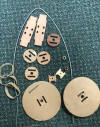
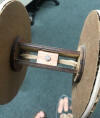

Homework:
- Complete Multiple Choice 1-12 from Mr. Pennington's Old 1-D Kinematics Test (Packet pages 17-18). Answer Key. If you have questions, watch this Video for Help
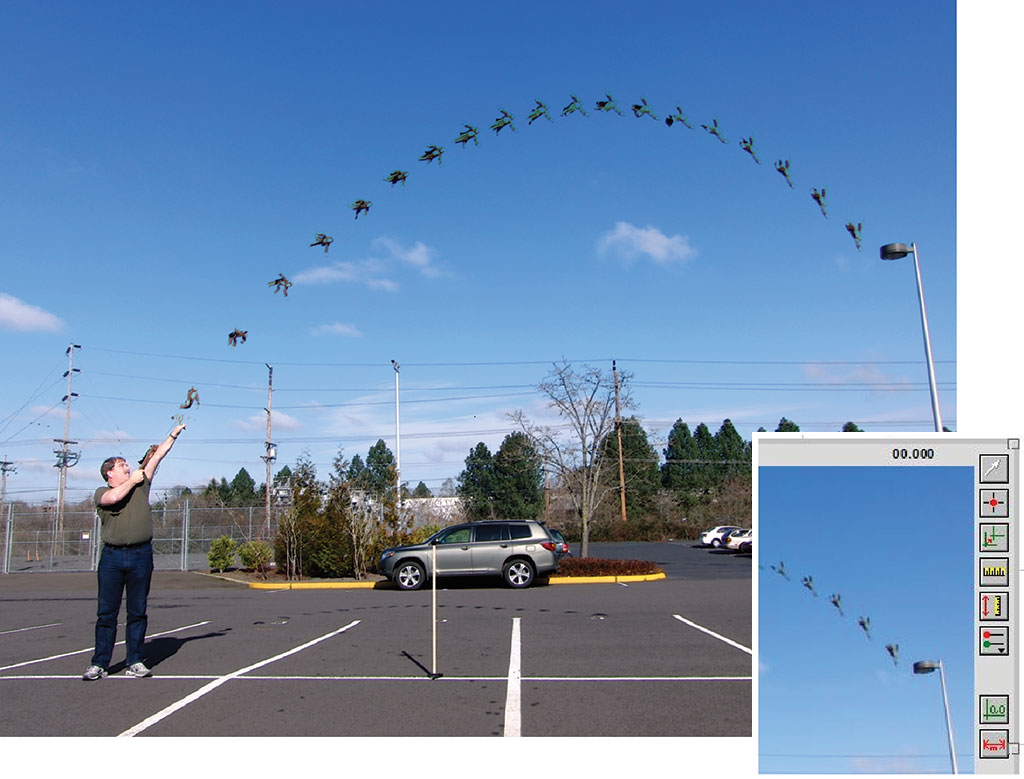 Warm Up:
Warm Up:
1. Assuming that the man in the picture is 2m tall, and the frame rate of the camera was the usual 30 frames per second, what was the approximate maximum speed of the object?
2. Based on your answers, do you think the assumption of 30 frames per second was too low, too high, or about right?
Today:
- Check/review homework -- Graph Comparisons Graph Comparisons solutions
-
Notes: Intro to Kinematics Formulas
Answer Key -- Kinematics Formulas and Practice Problems
Video from last year (notes
start around 16:50)
- Some other derivations:
- If there's time...
- My info
- Class goals
- Slideshow -- stuff on my phone from the last year
- Student info sheet
- My info
Homework:
- Finish the problems on p. 13 and 14 of the Unit 1 Packet. Answer Key -- Kinematics Formulas and Practice Problems
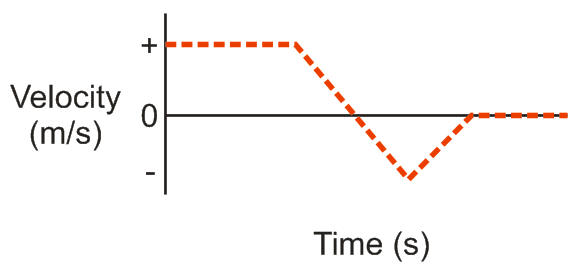 Class
1.5 Friday,
8/27/21
Class
1.5 Friday,
8/27/21Warm Up:
Use the velocity vs time graph on the right to sketch the shape of a corresponding position vs time graph. [Assume that motion away from the sensor is positive, and motion toward the sensor is negative.]
Today:
- Check/review the homework.
- Complete Acceleration Notes -- Answer Key Video from Last Year -- start at 12:50
- Graph work time
Optional Reading -- Online Textbook:
Homework:
- Complete graph comparisons on pages 9 and 10 of packet. Graph Comparisons solutions Video Solutions
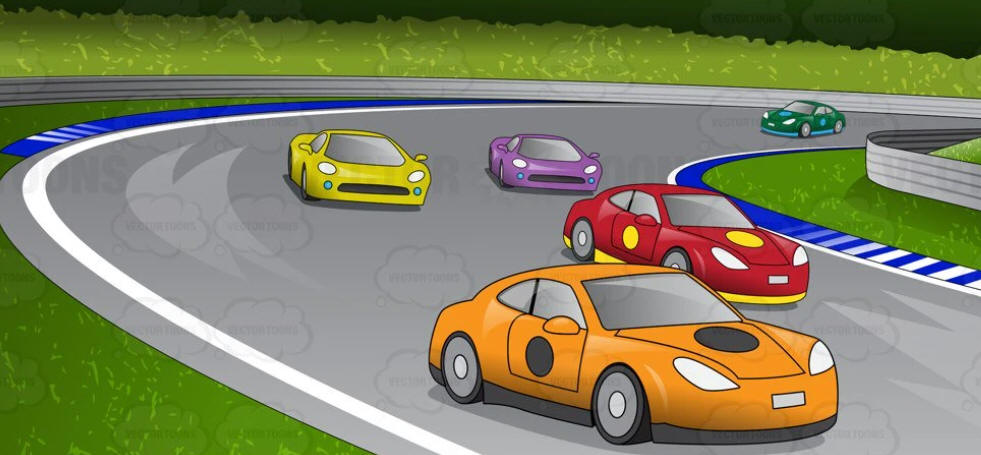 Class 1:
Thursday,
8/26/21
Class 1:
Thursday,
8/26/21Warm Up: Suppose you're involved in a 2 lap race. If you want your overall average speed to be twice as fast as your speed for the first lap, how much faster do you have to go during the 2nd lap? [To calculate average speed you can use rate = distance / time]
Today:
- Sign on to desktop computers -- Username: guest-ehs Password: guestehs
- Course expectations -- we already covered some of this in A5/6 (grading, homework, clean-up)
- Motion Matching Activity
-- do the activity and answer the questions. Work in groups of
3 or 4.
- Directions: Matching Motion Graphs with motion detector (Web page)
- Questions are on packet page 6.
- Notes -- Kinematics in 1-D -- pages 1-4 of the packet. Video of the notes from last year -- read the comments to find the starting point. 1-D Kinematics notes Answer Key
- If there's time...
- My info
- Class goals
- Slideshow -- stuff on my phone from the last year
- Student info sheet
- Online Textbook:
- My info
Optional Online Textbook Reading:
Homework:
- Complete page 5 of the packet. Answer Key
Physics 200: Mr. Stapleton
Warm Up:
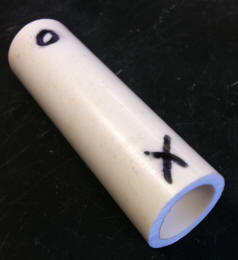 Spin
one of the "sprotating cylinders" by pressing one end until it squirts
out from under your finger. Try pressing the other end.
Spin
one of the "sprotating cylinders" by pressing one end until it squirts
out from under your finger. Try pressing the other end.
When the cylinder is spinning, why do you only see the symbol that you press?
Today:
- Learn names/pronunciations -- fill out seating chart
- Get the Unit 1 Packet:
- Enter attendance
- Preview
- of the year (see last 2018-19 site).
- This unit -- skim through the packet
- A5/6 has D lunch (12:45)
- B-Day Split block times are:
- B7 -- 1:15-1:53
- B8 -- 1:57-2:35
Links:
- Course expectations (waiting for some updated links)
Online Textbook Reading:
Homework: None












